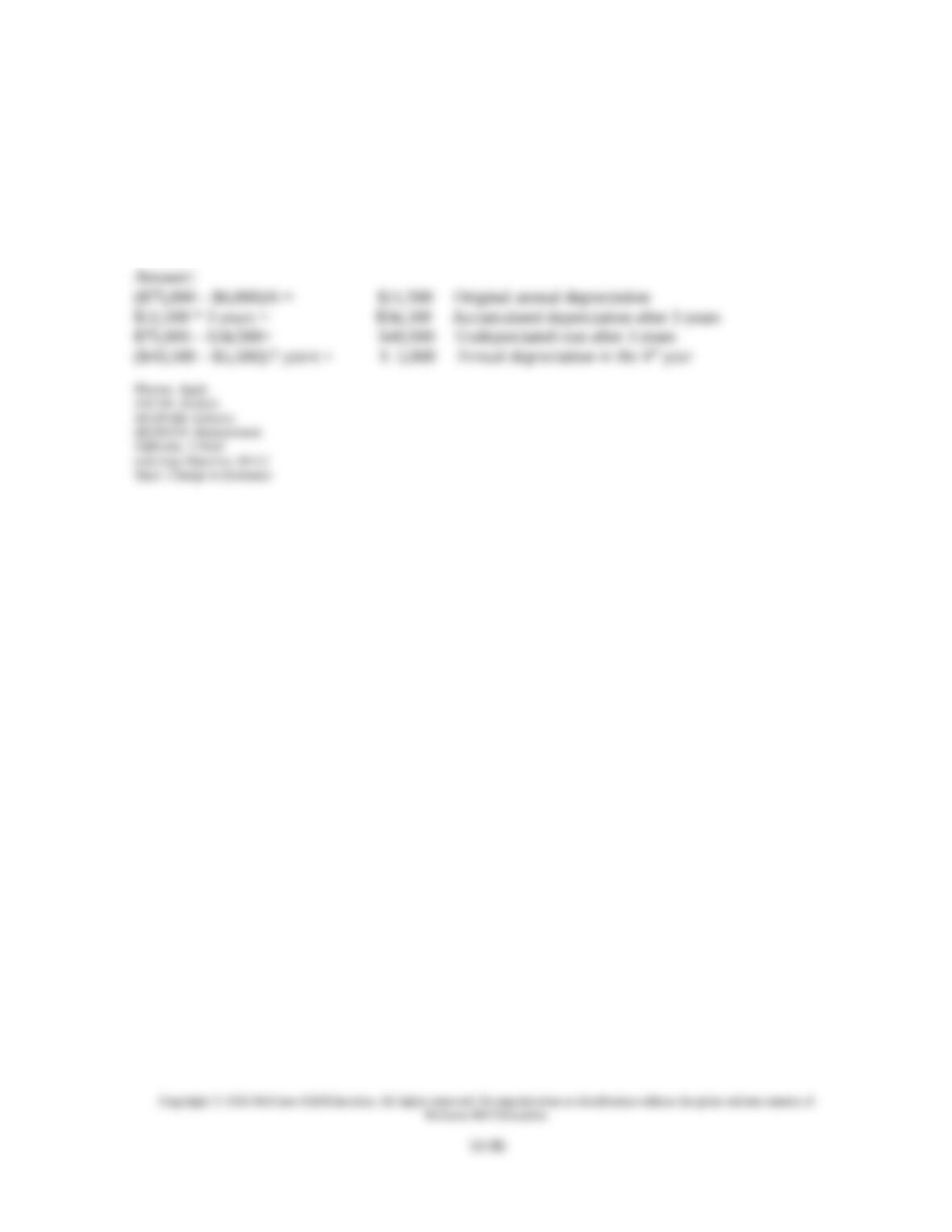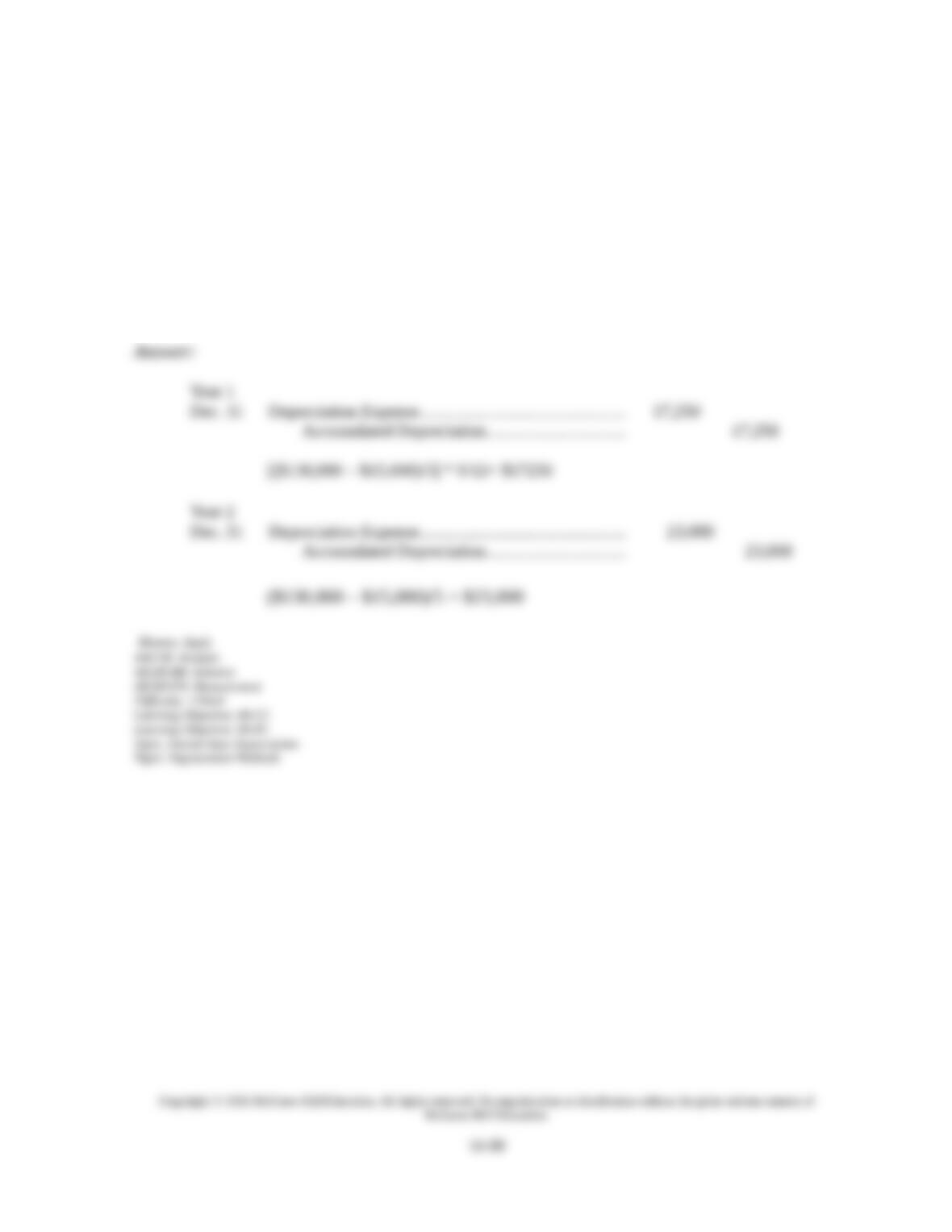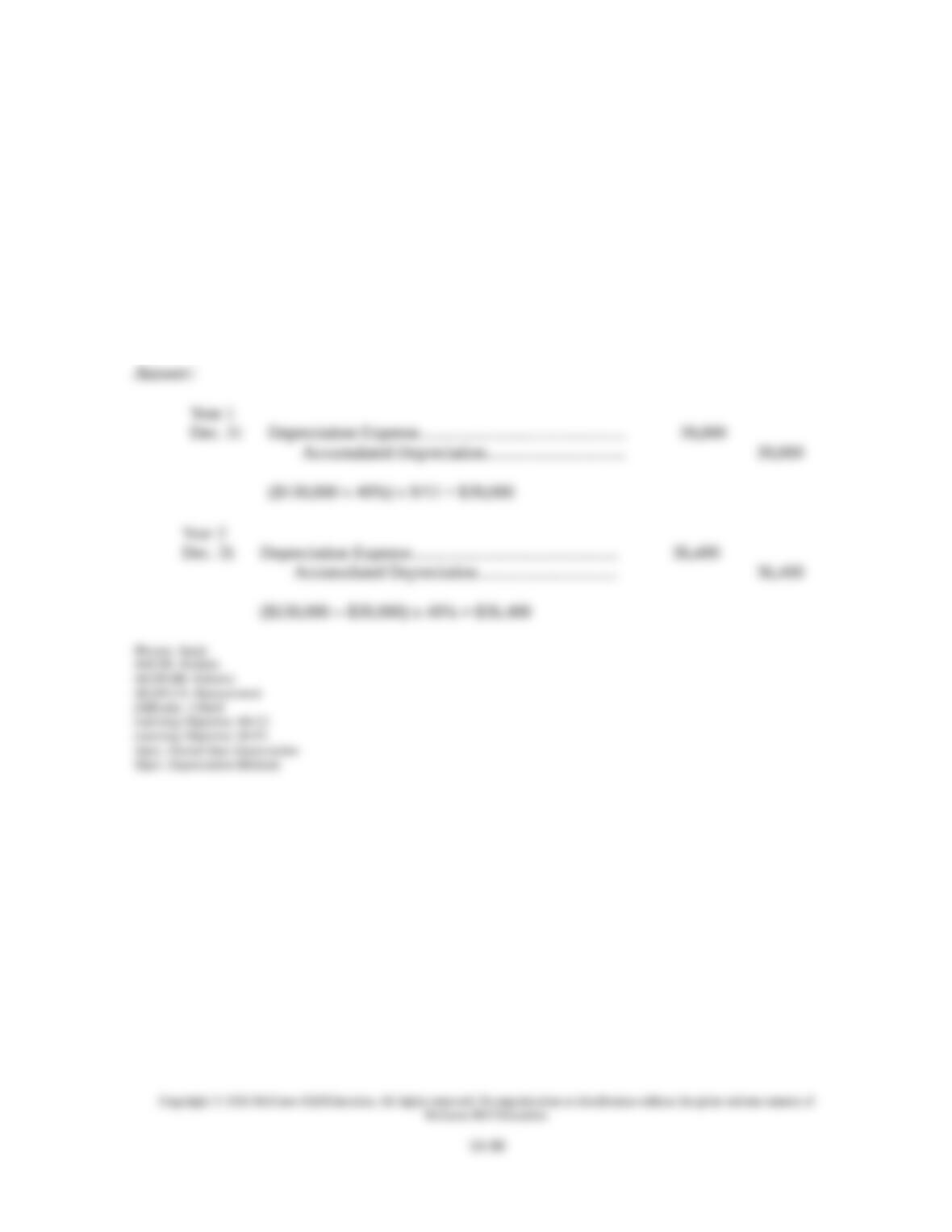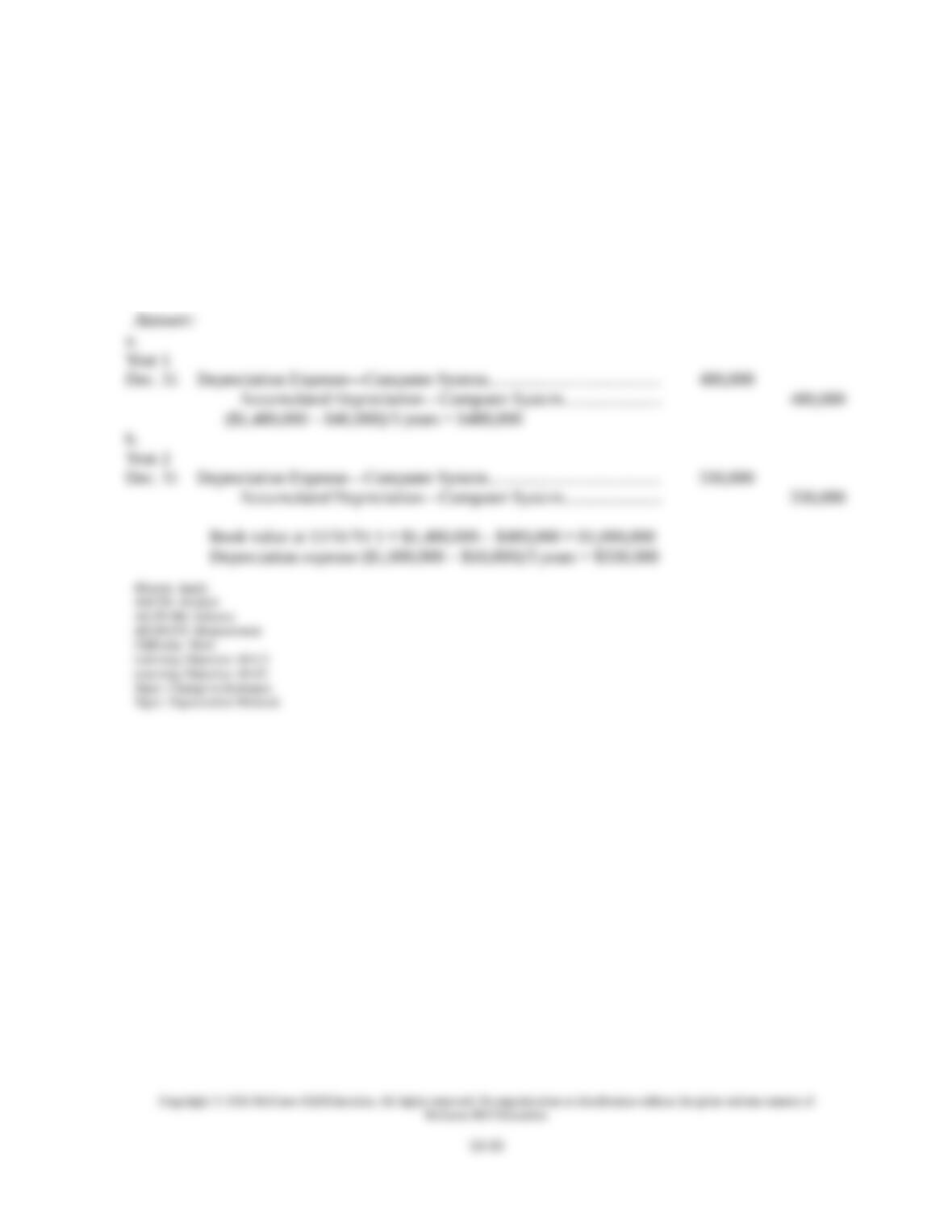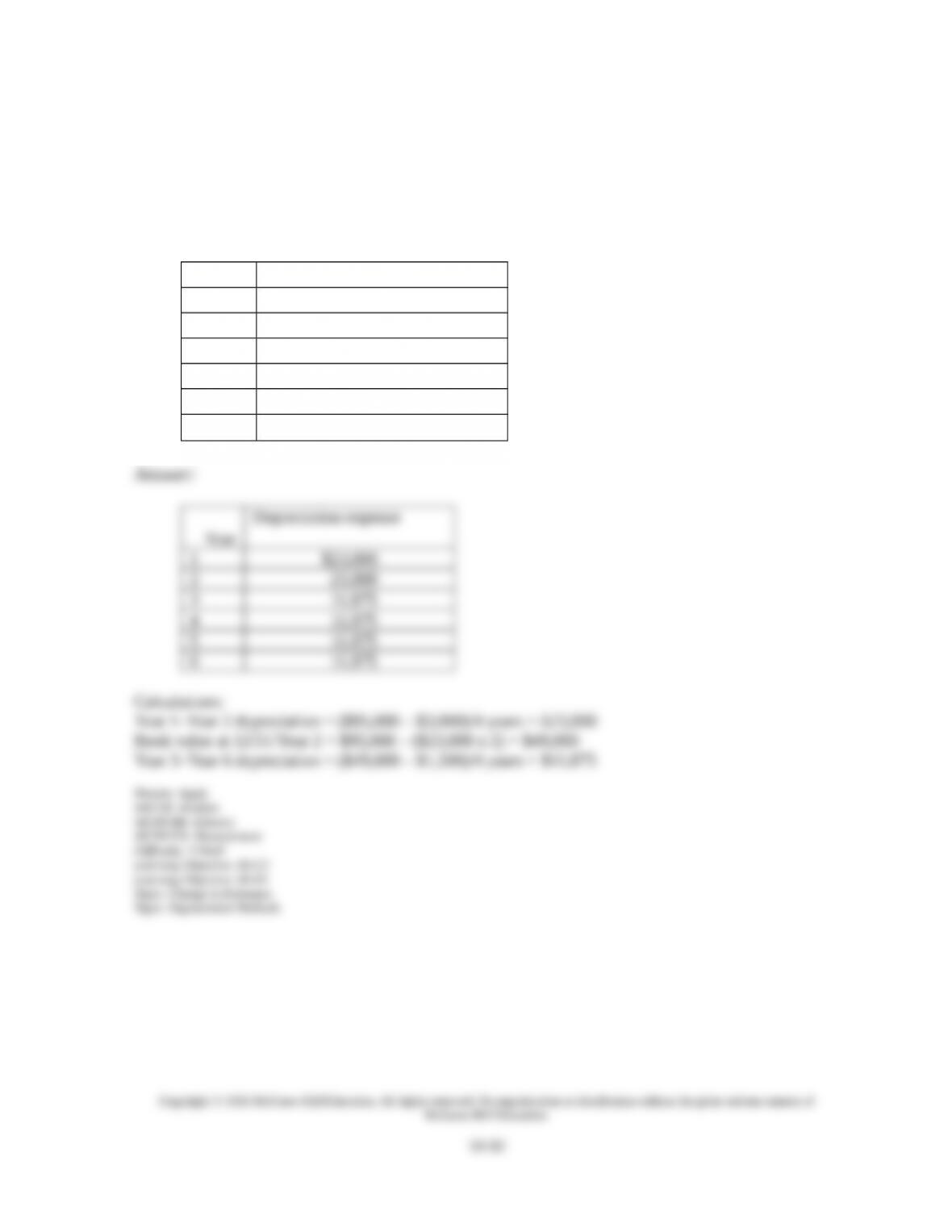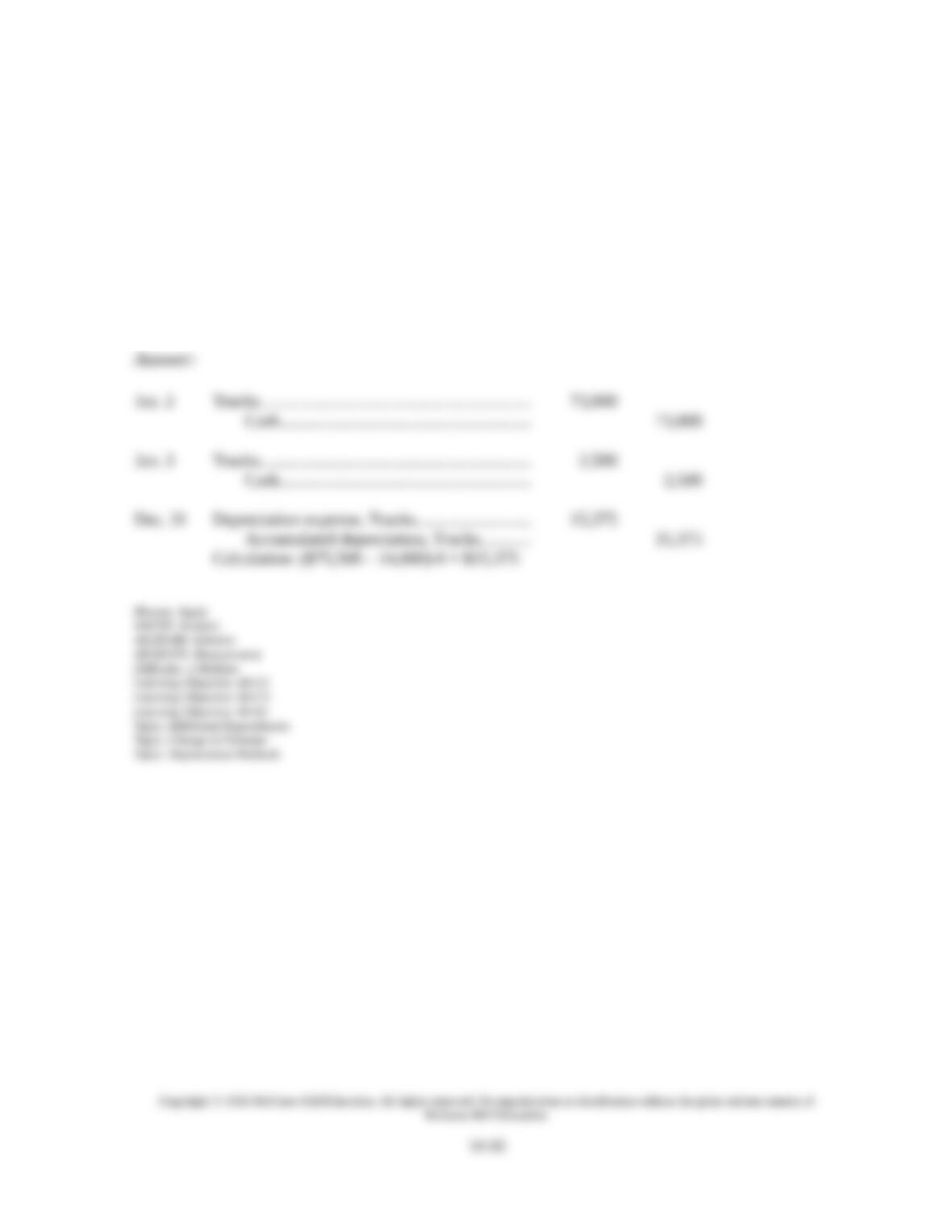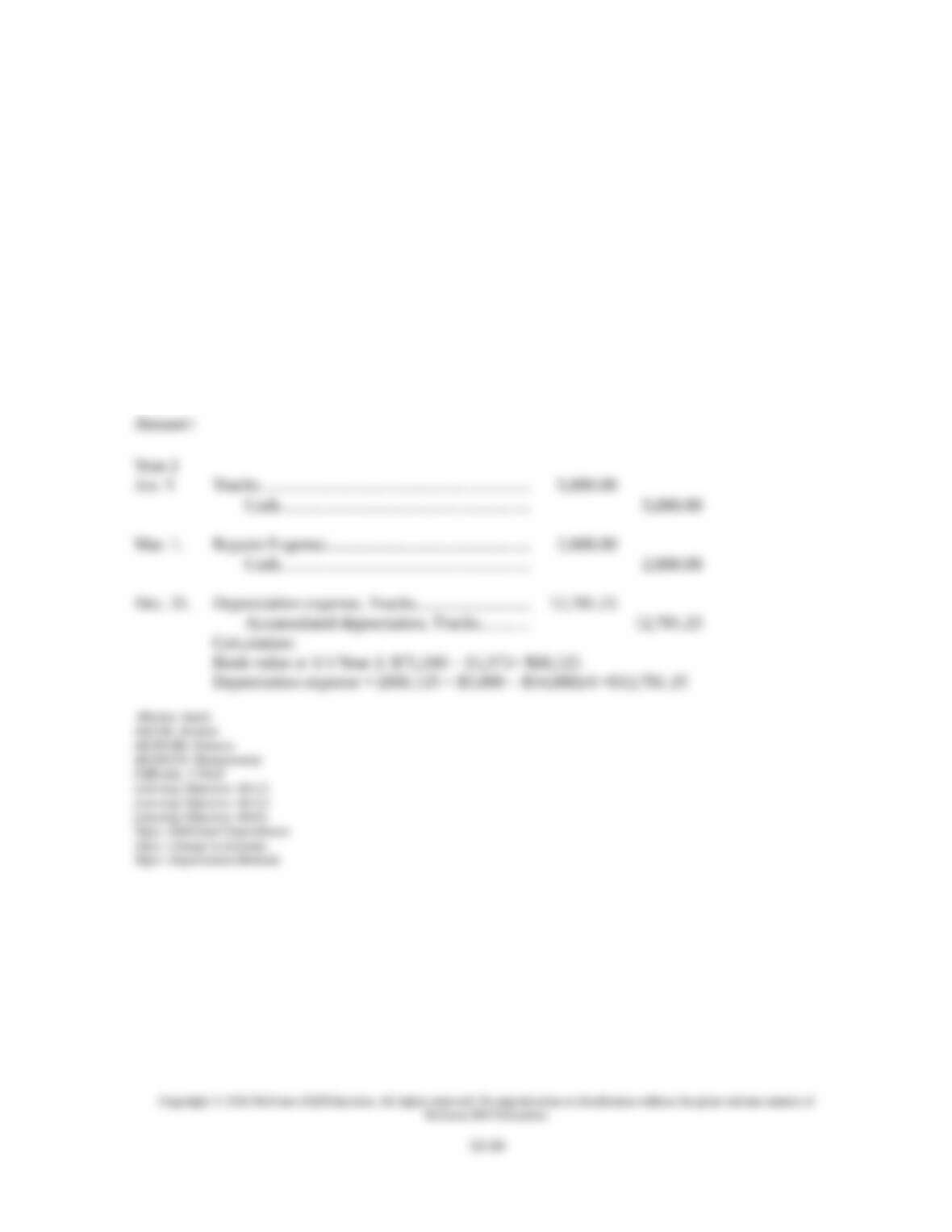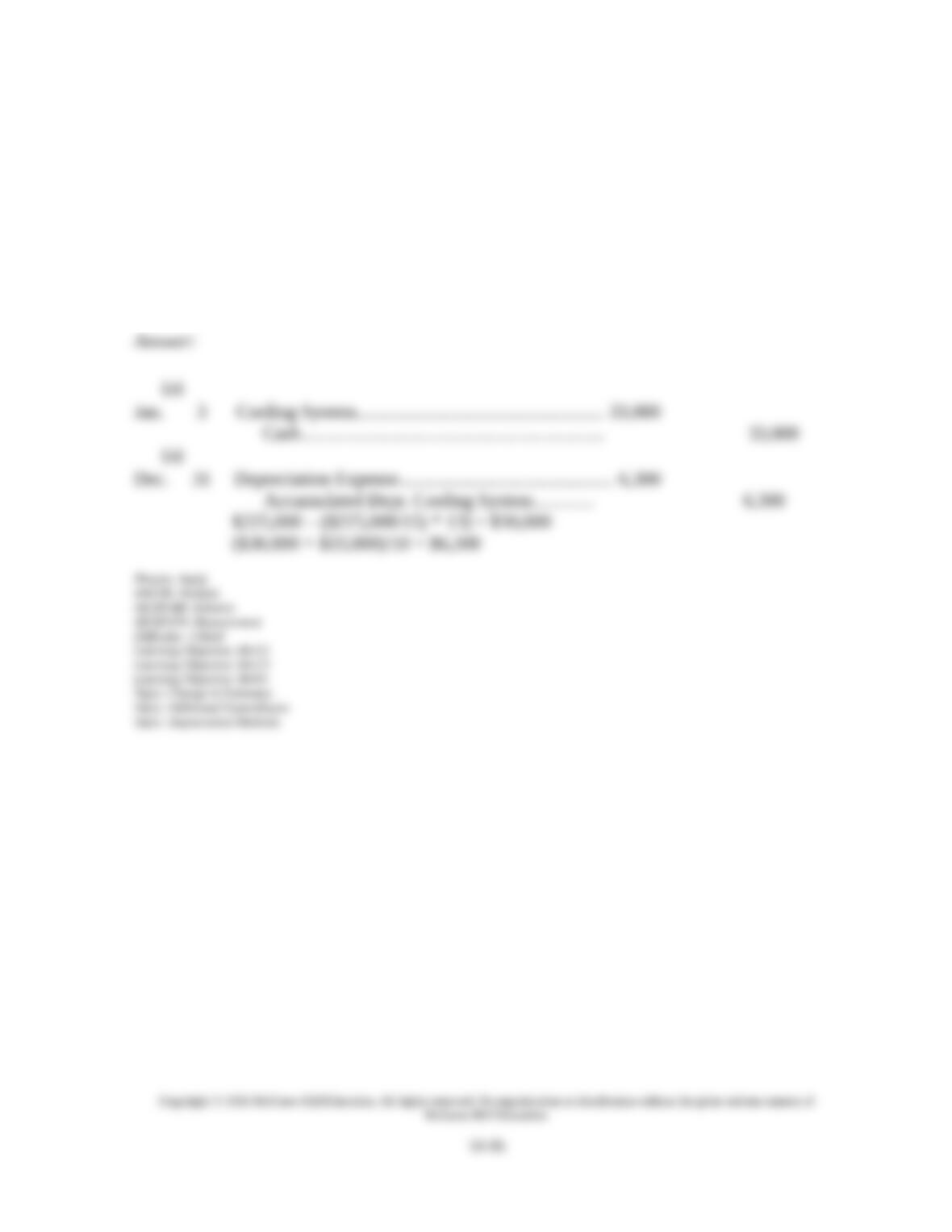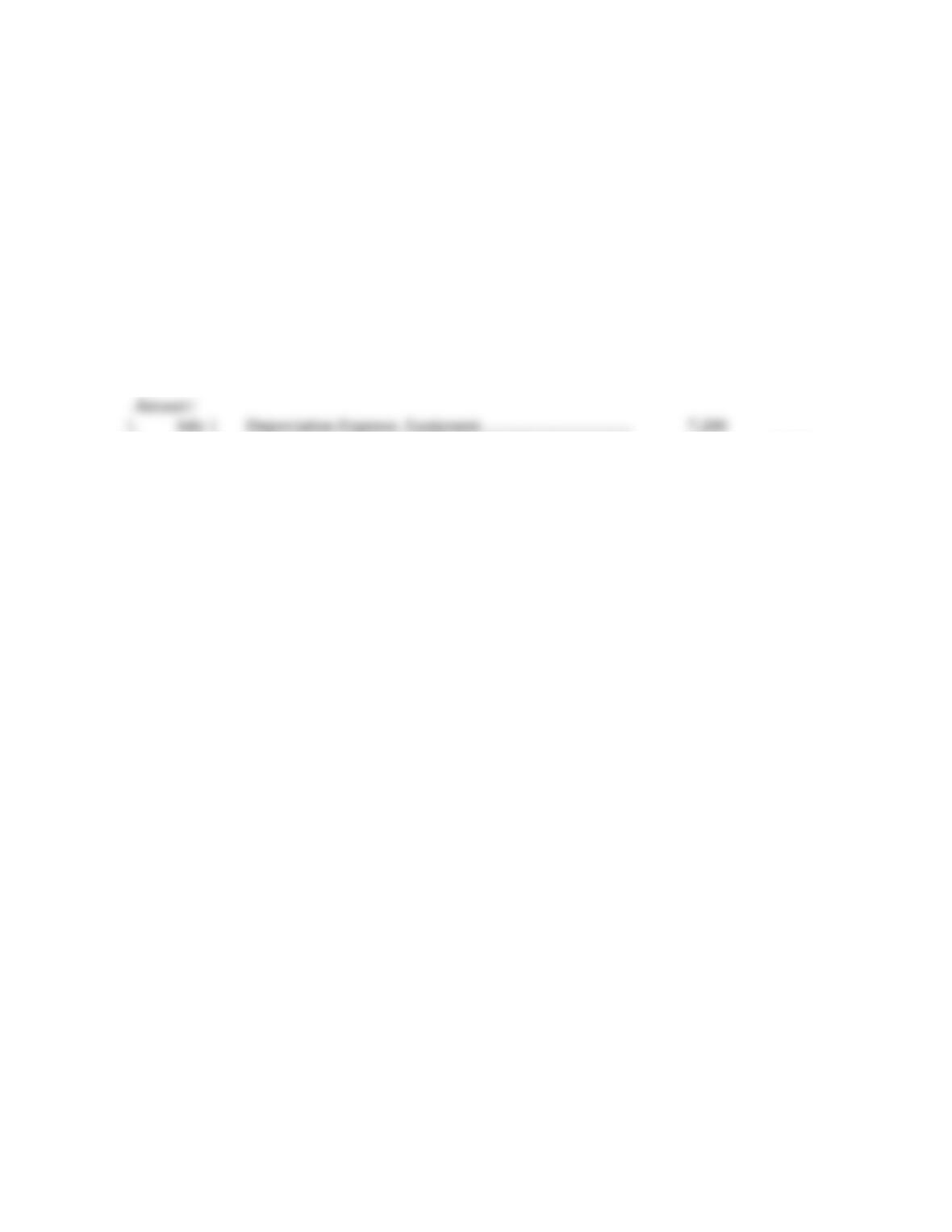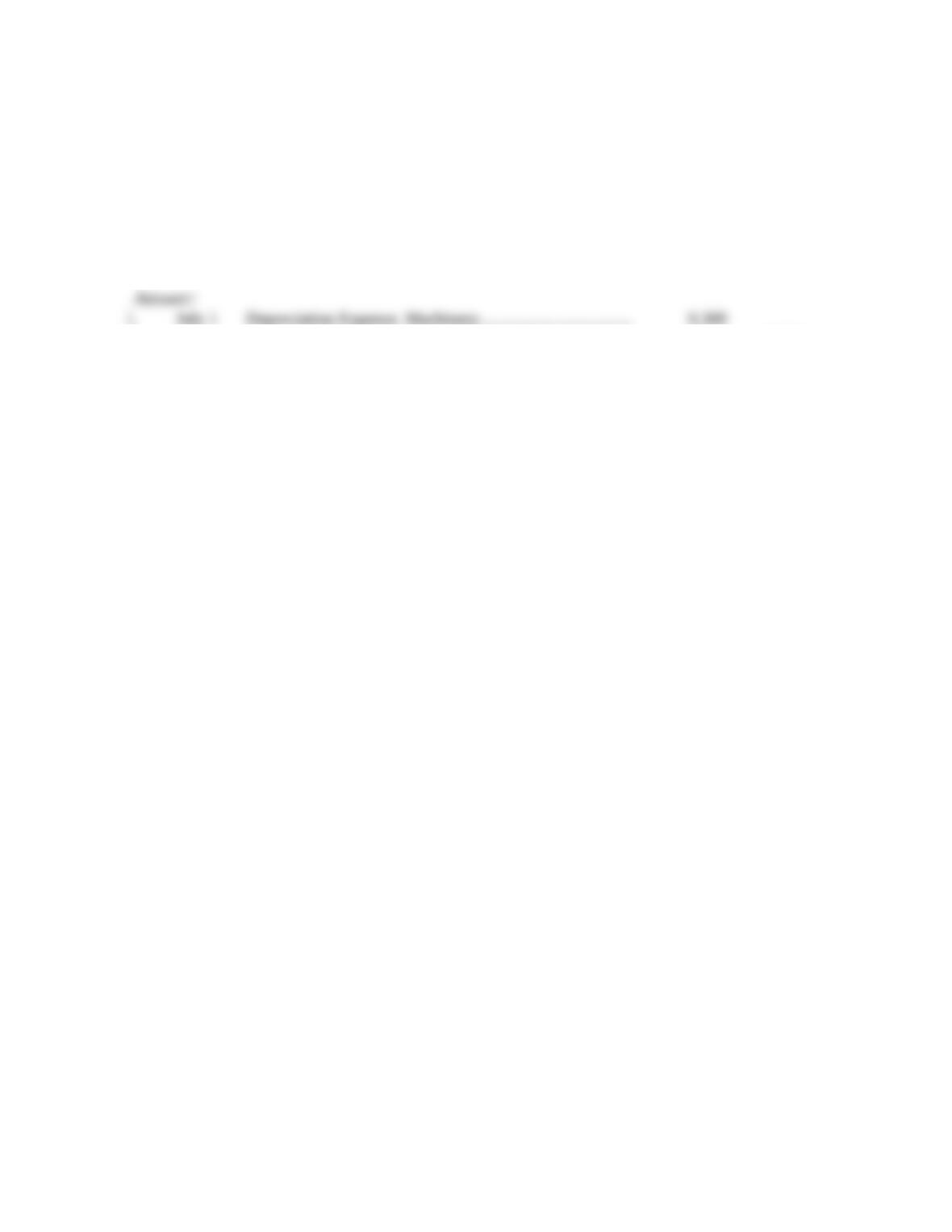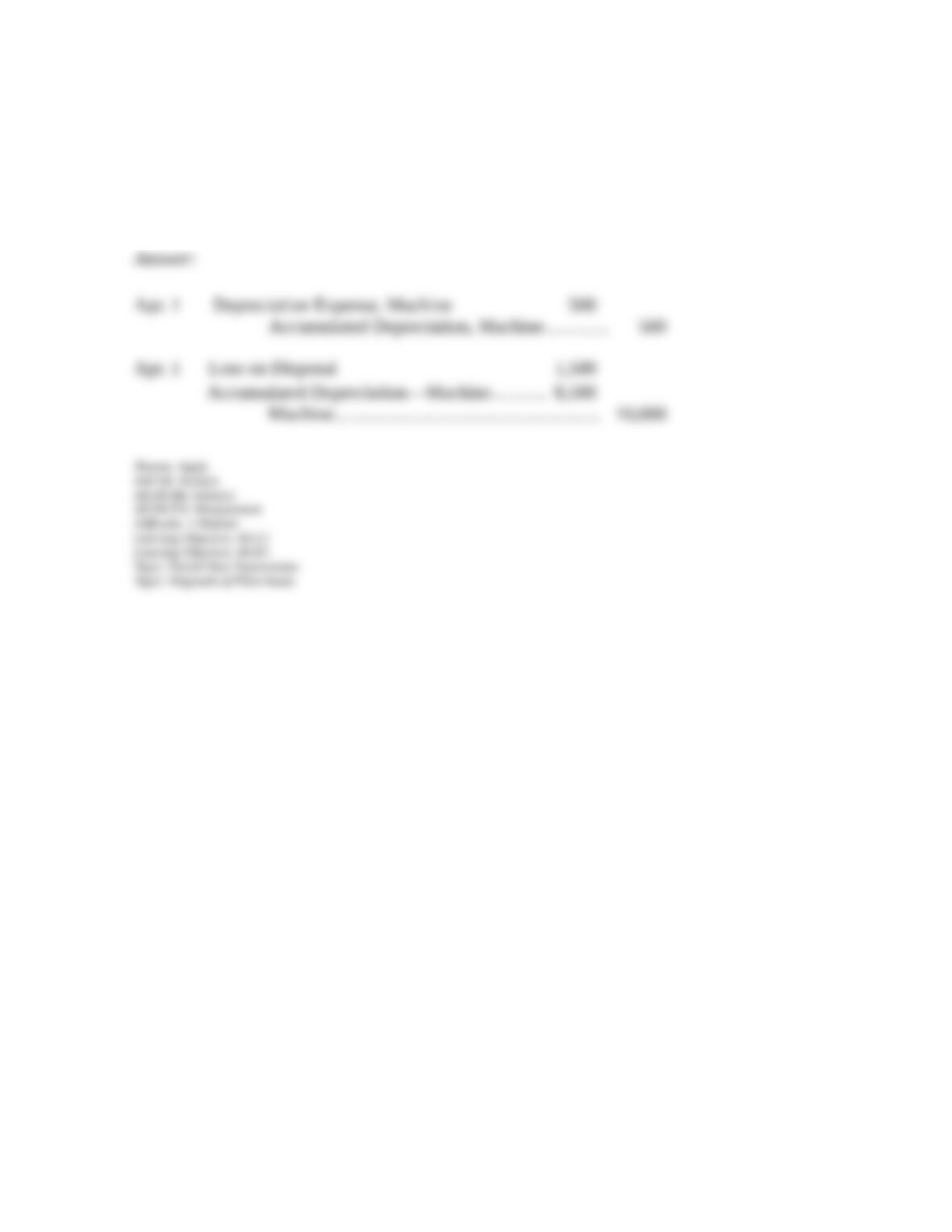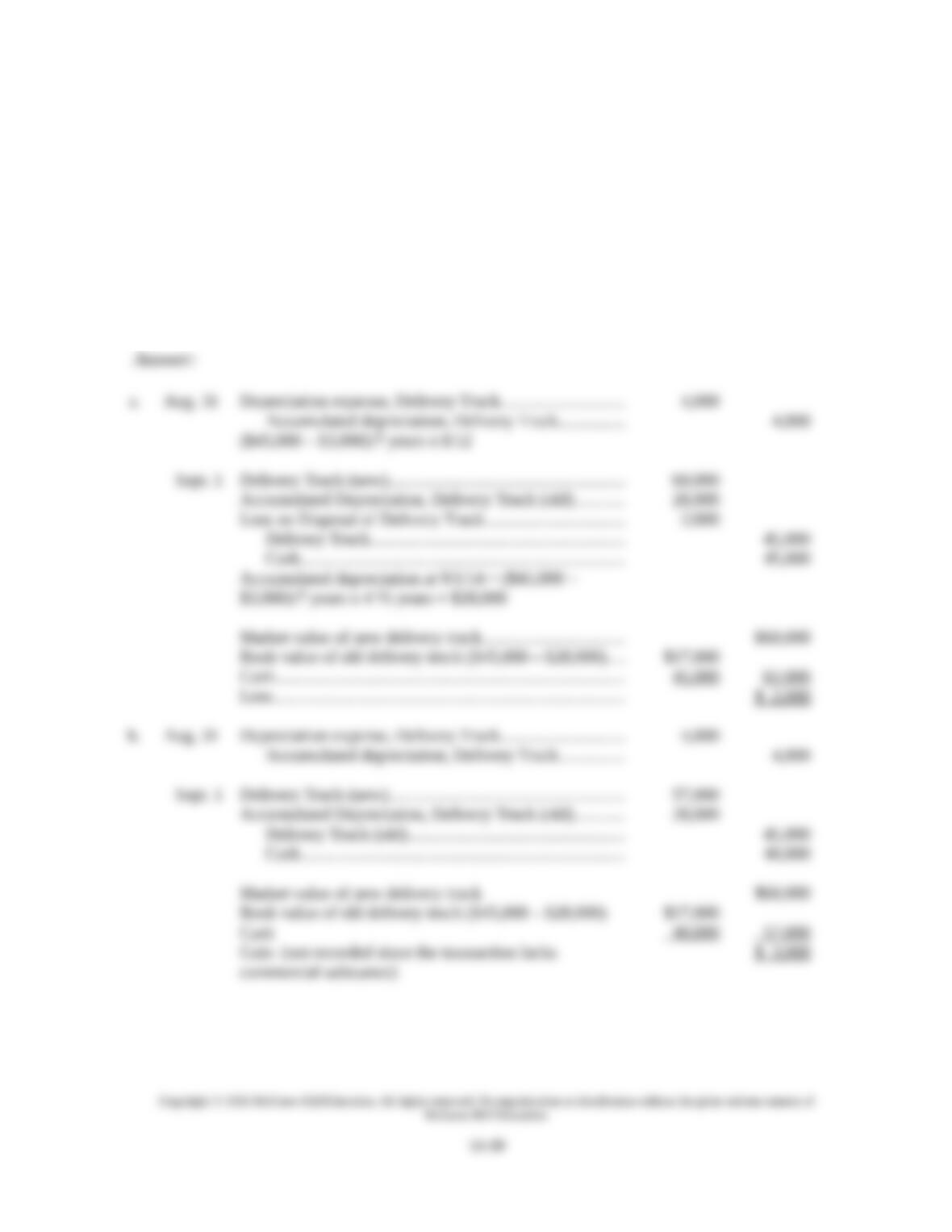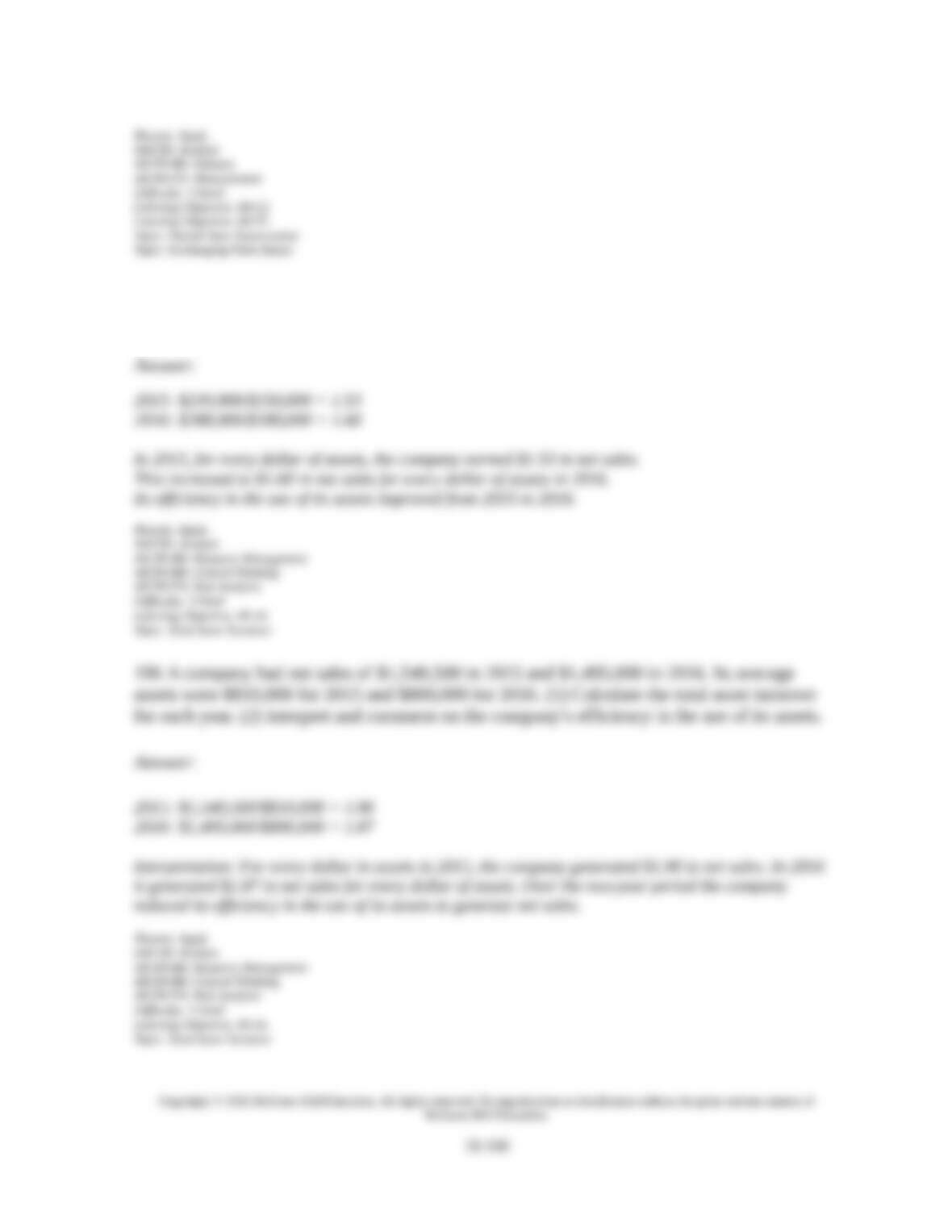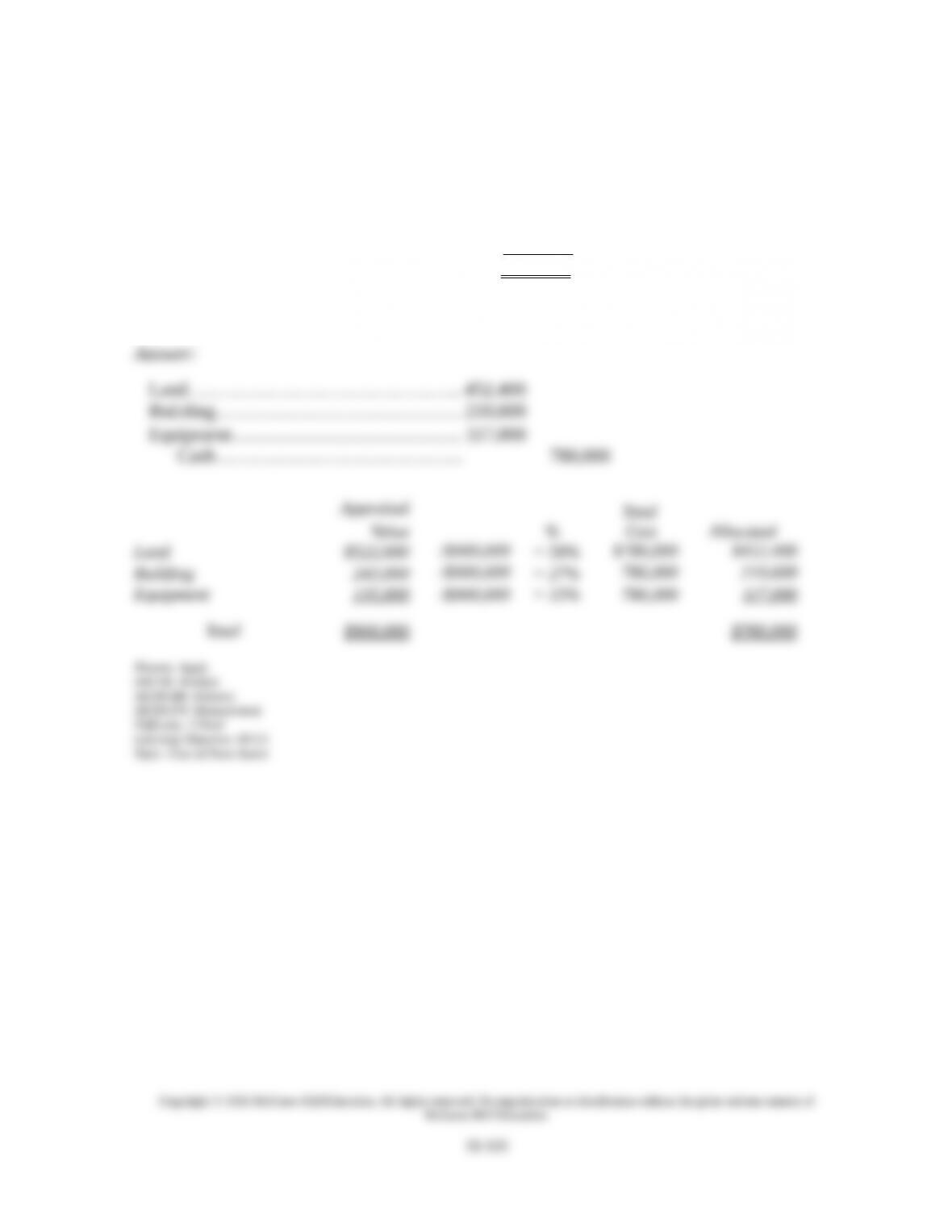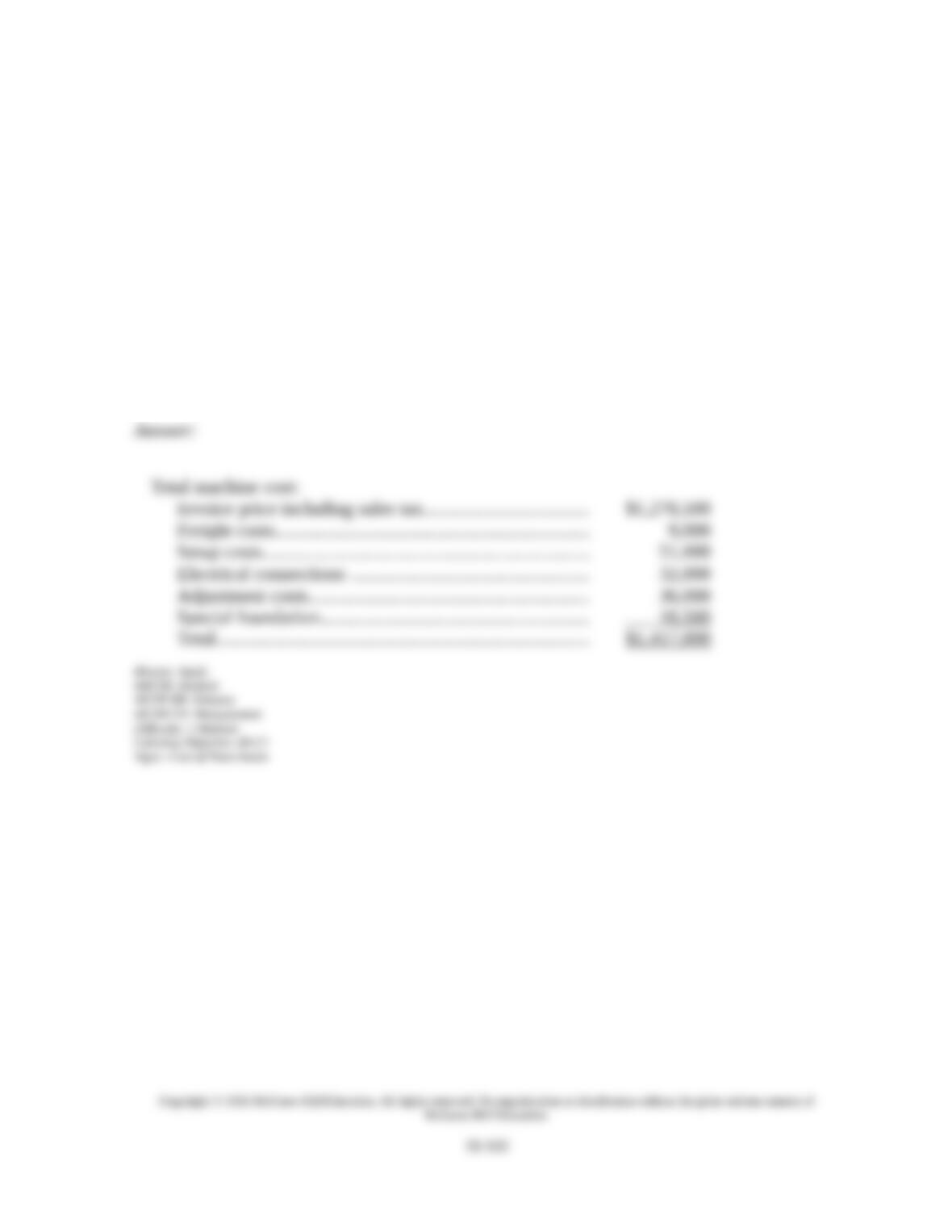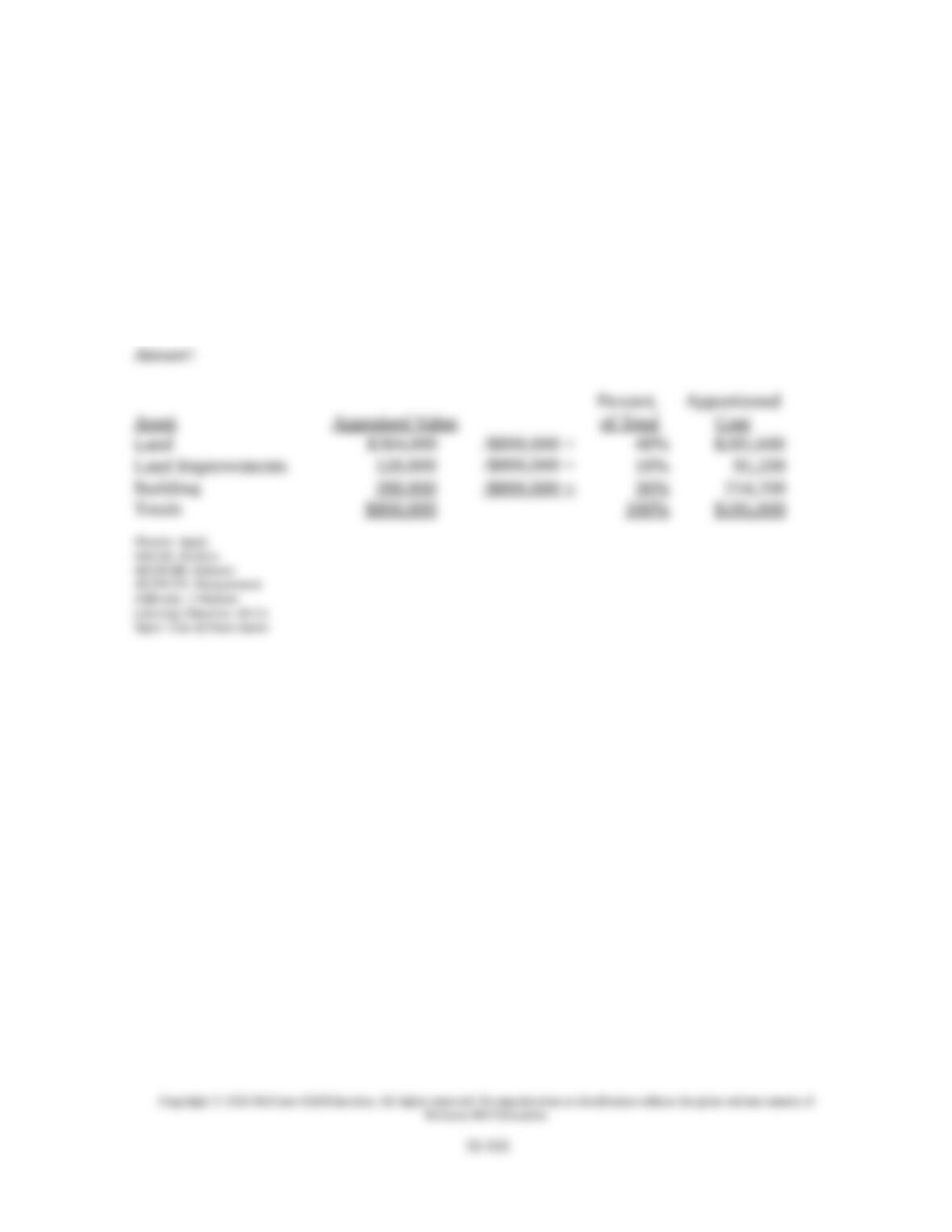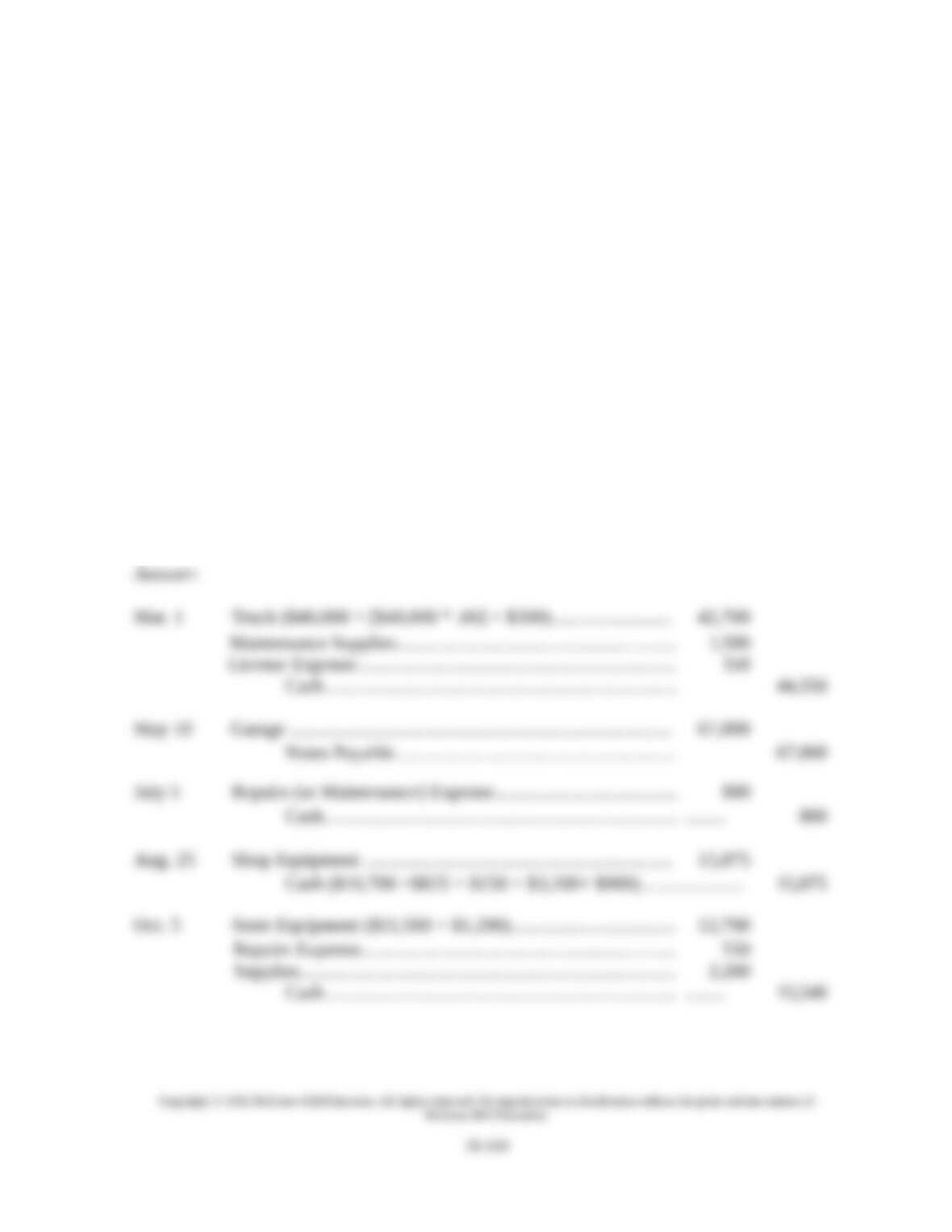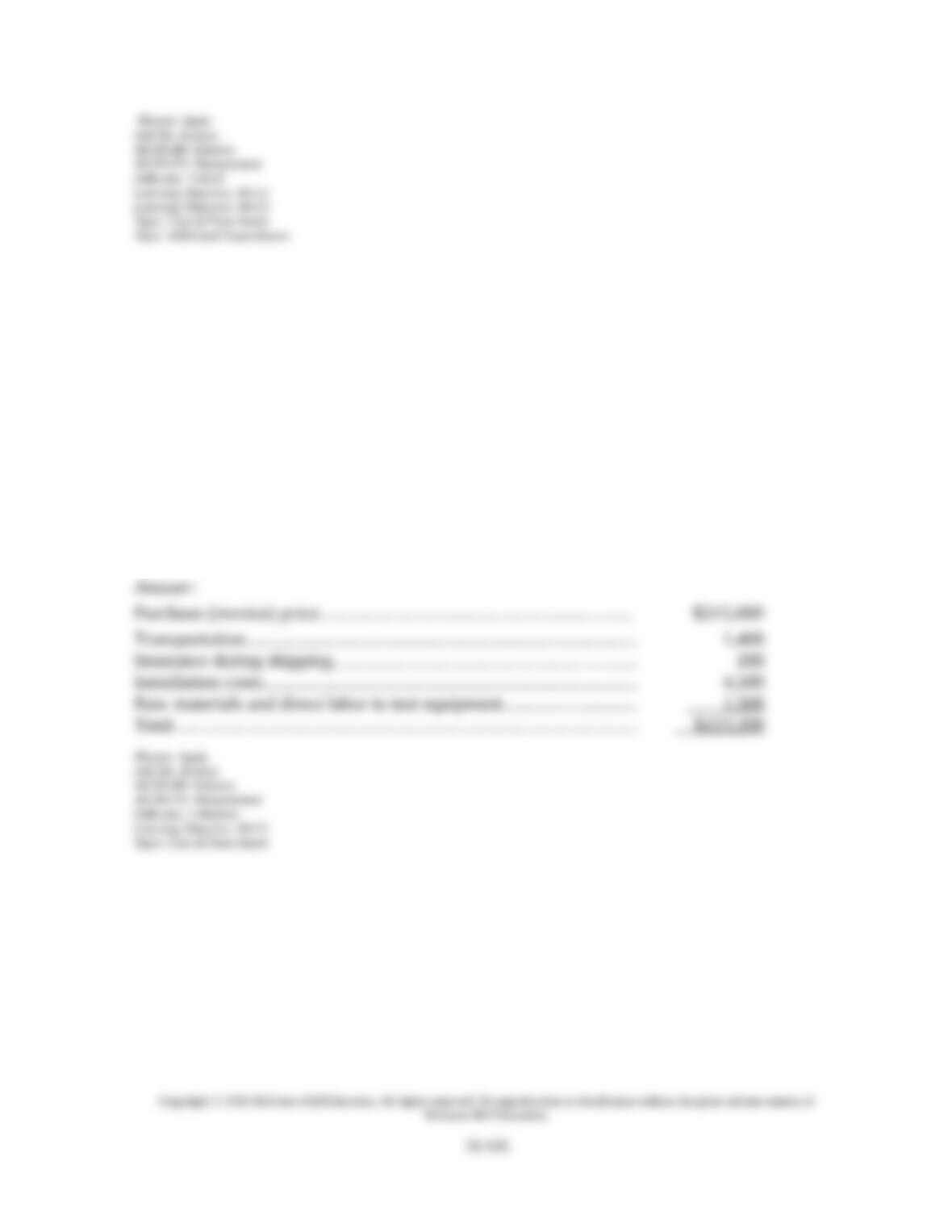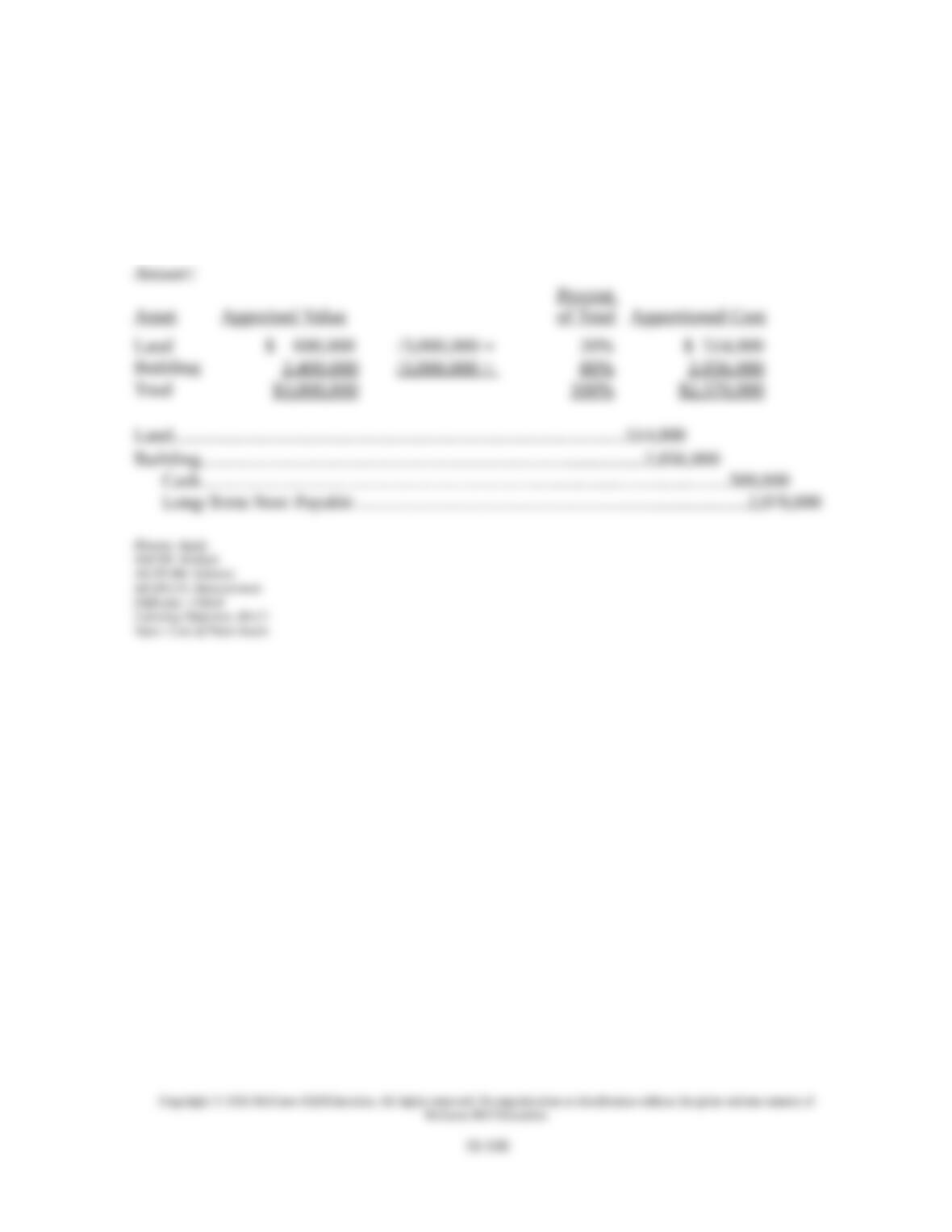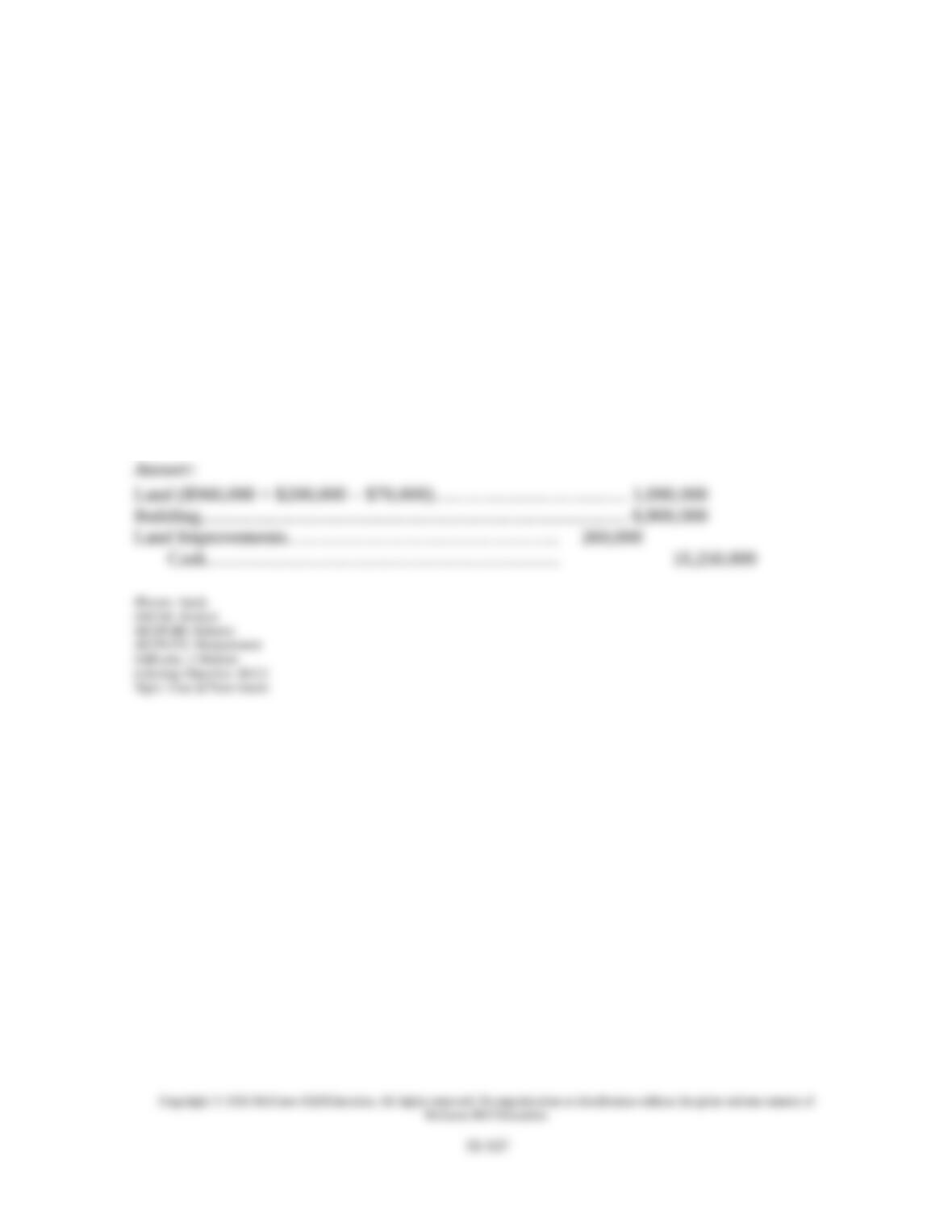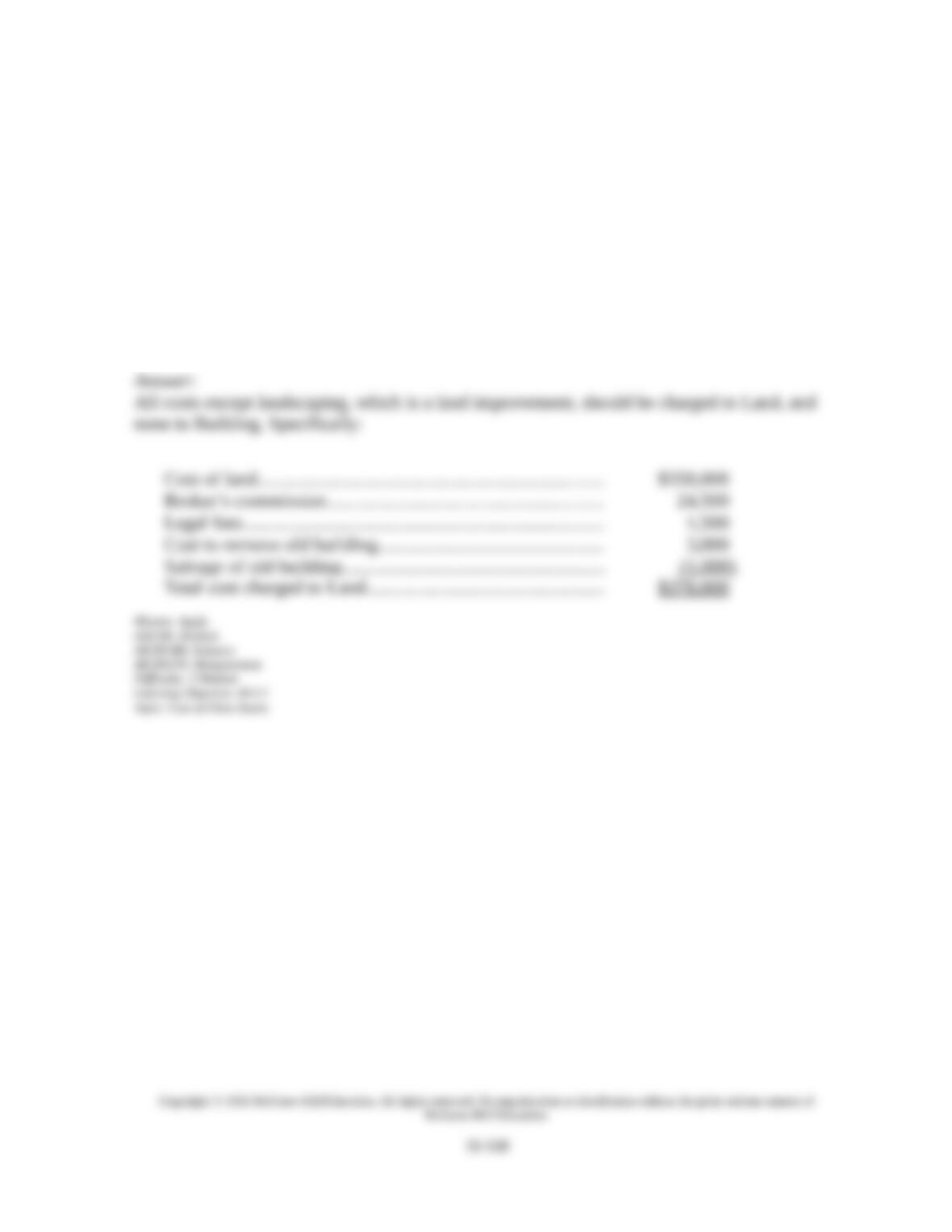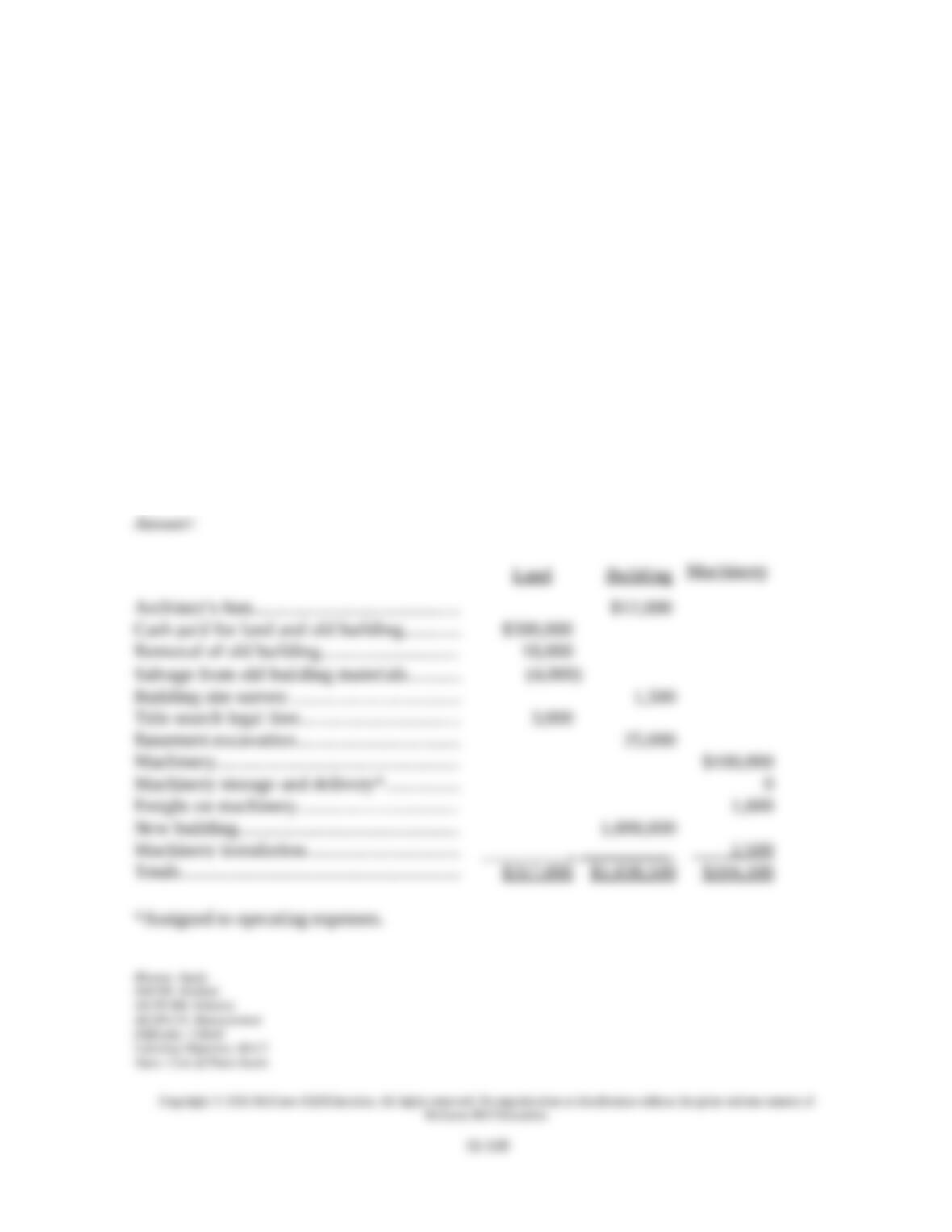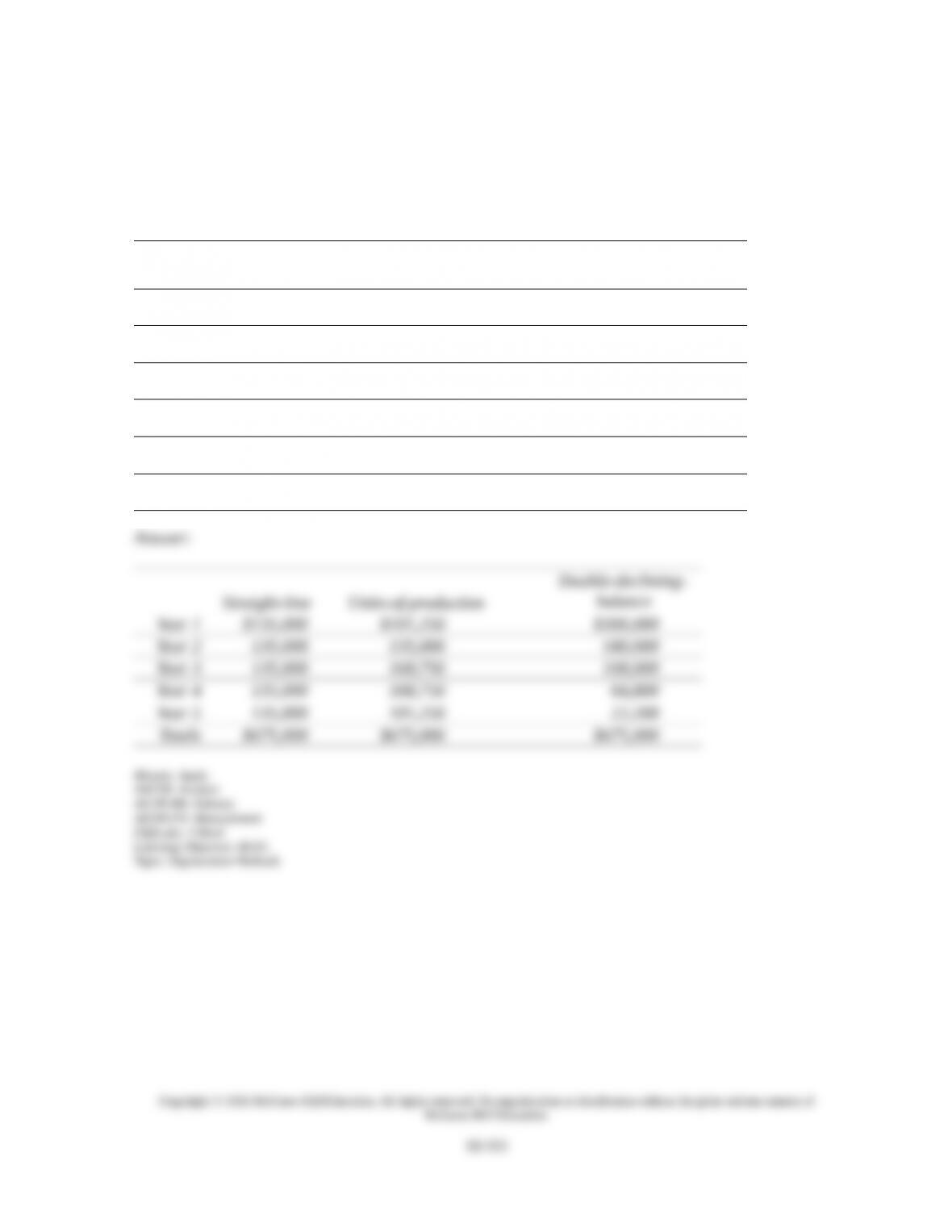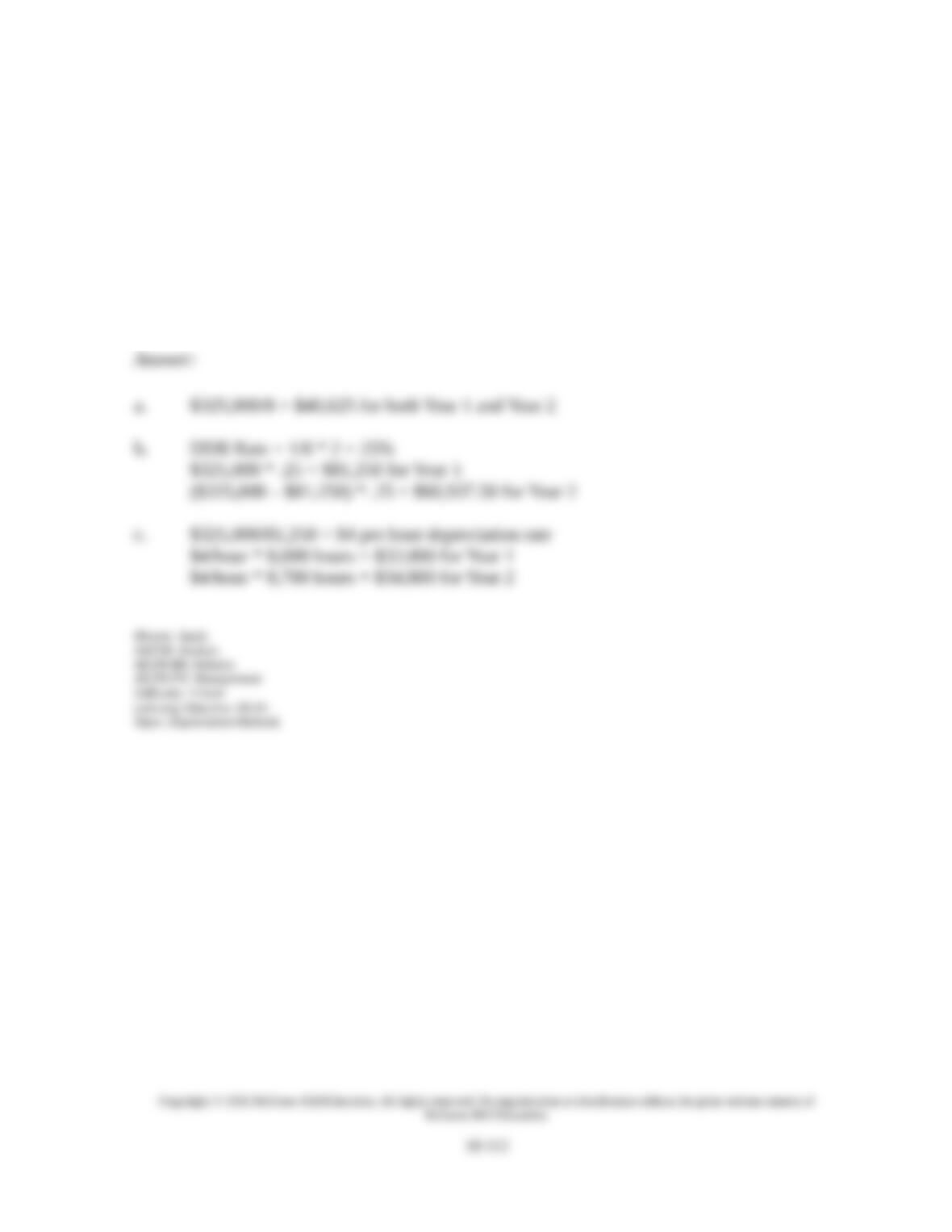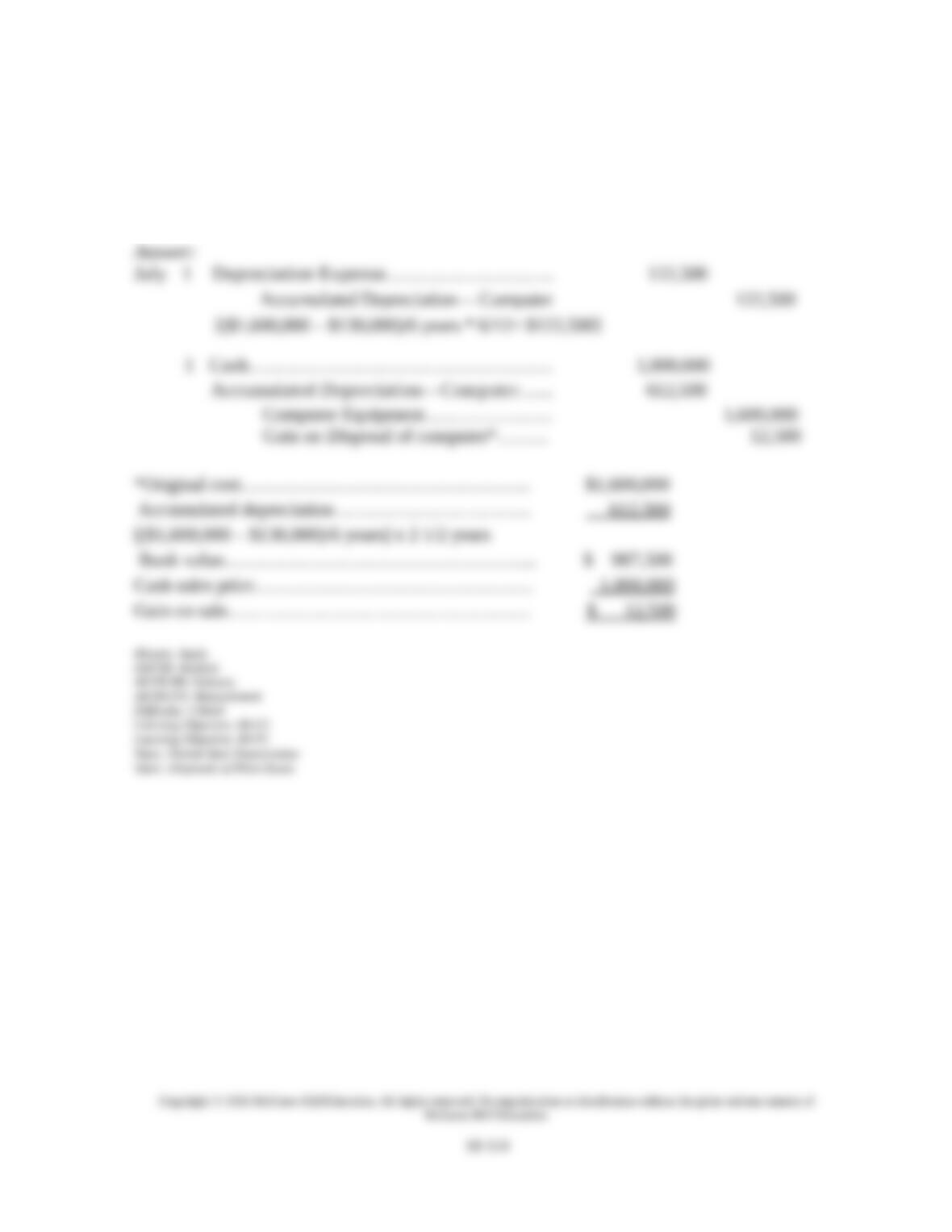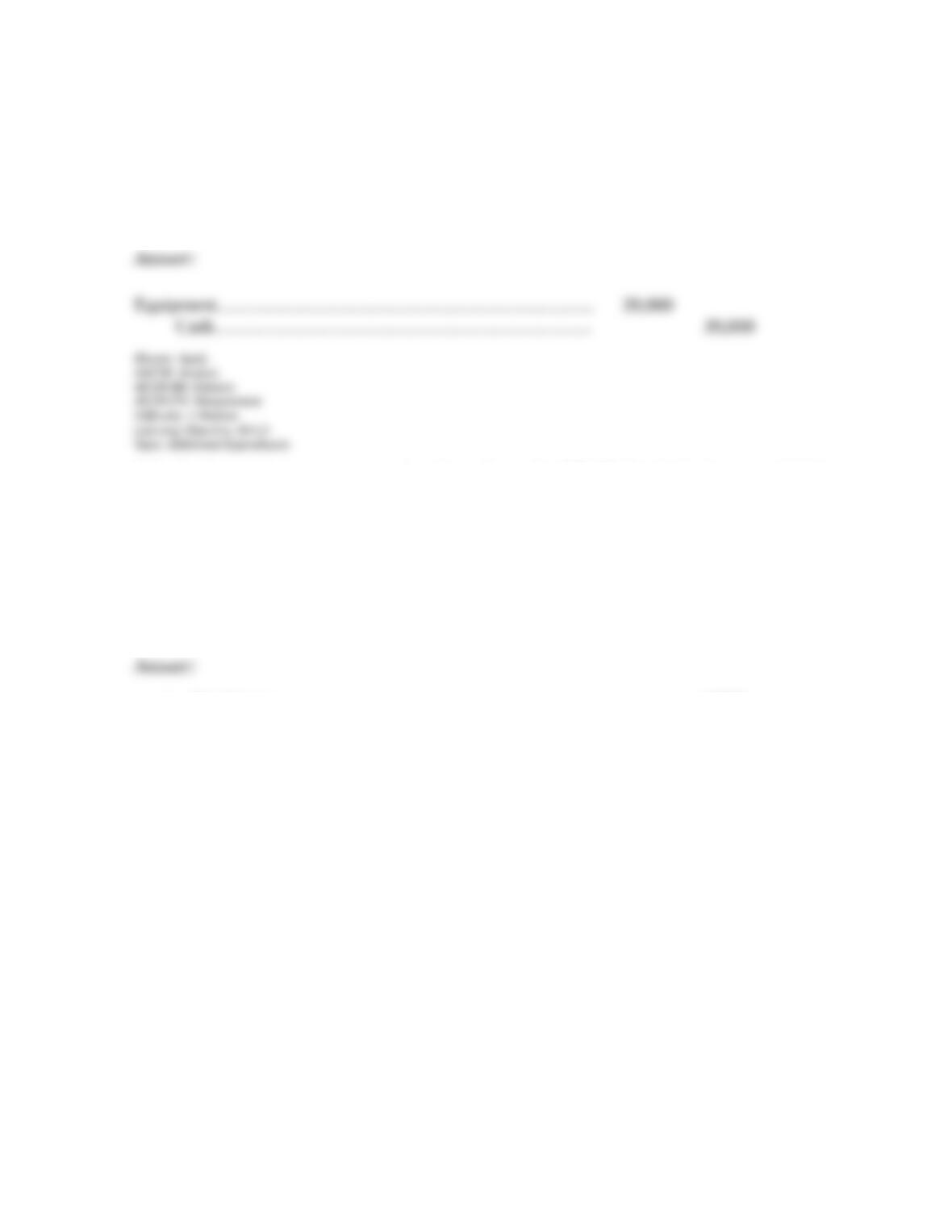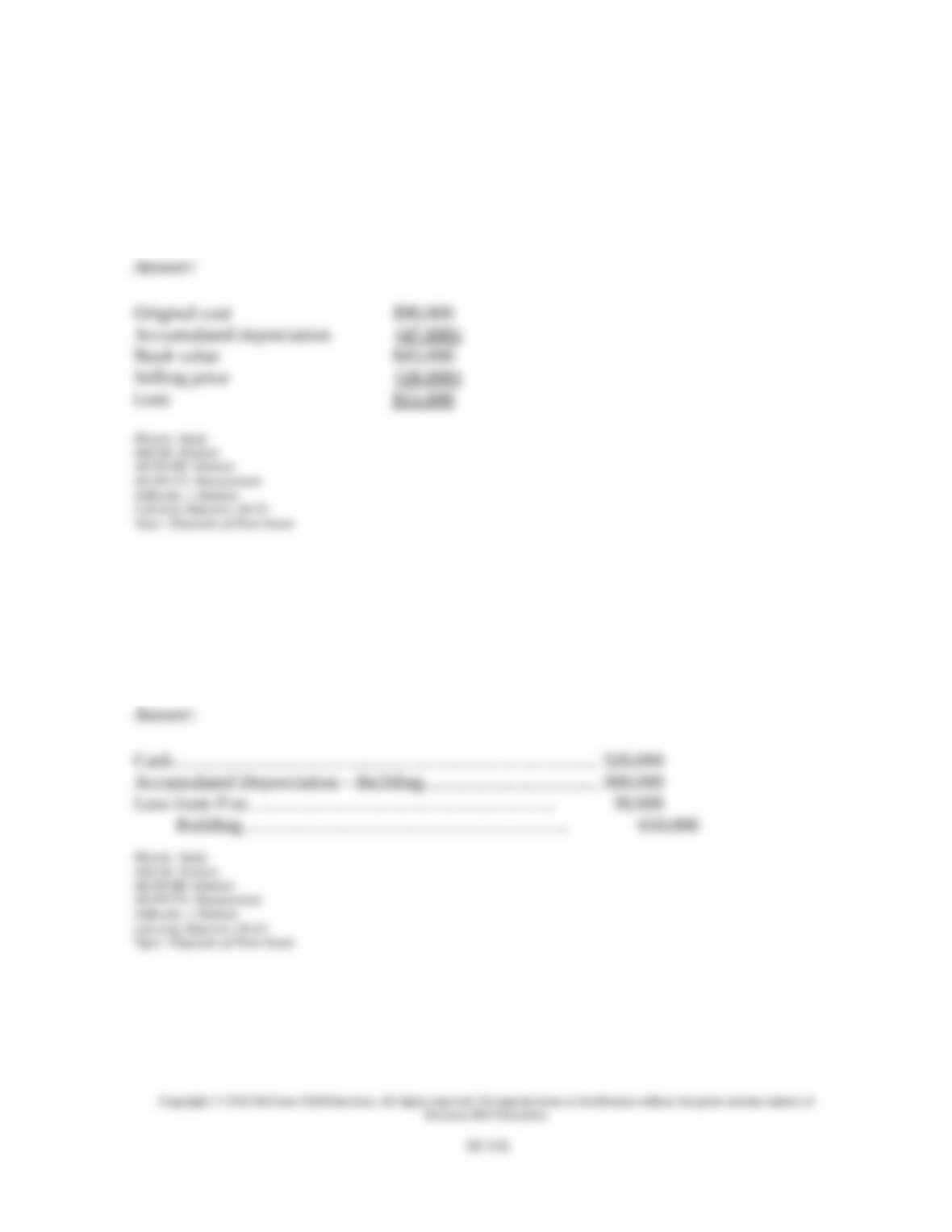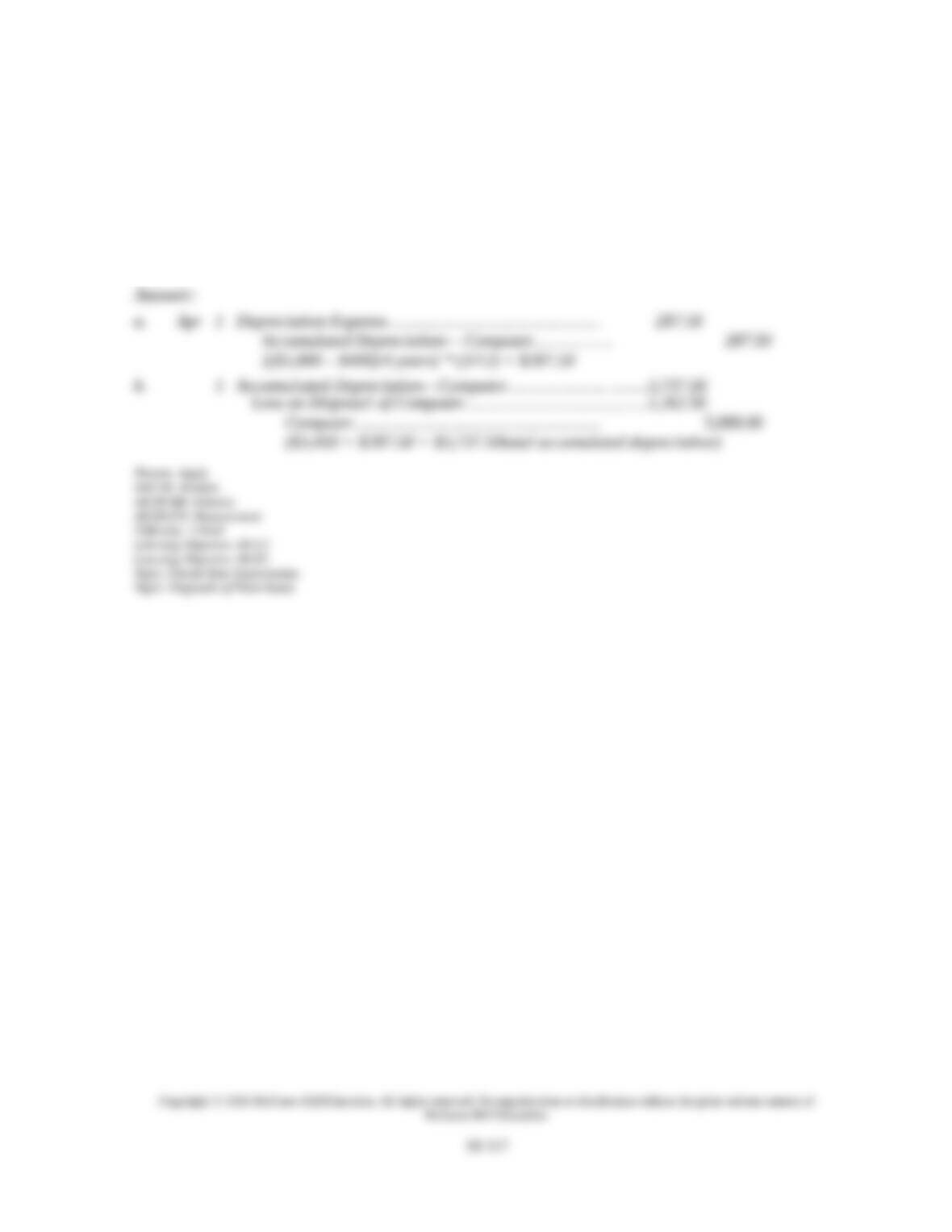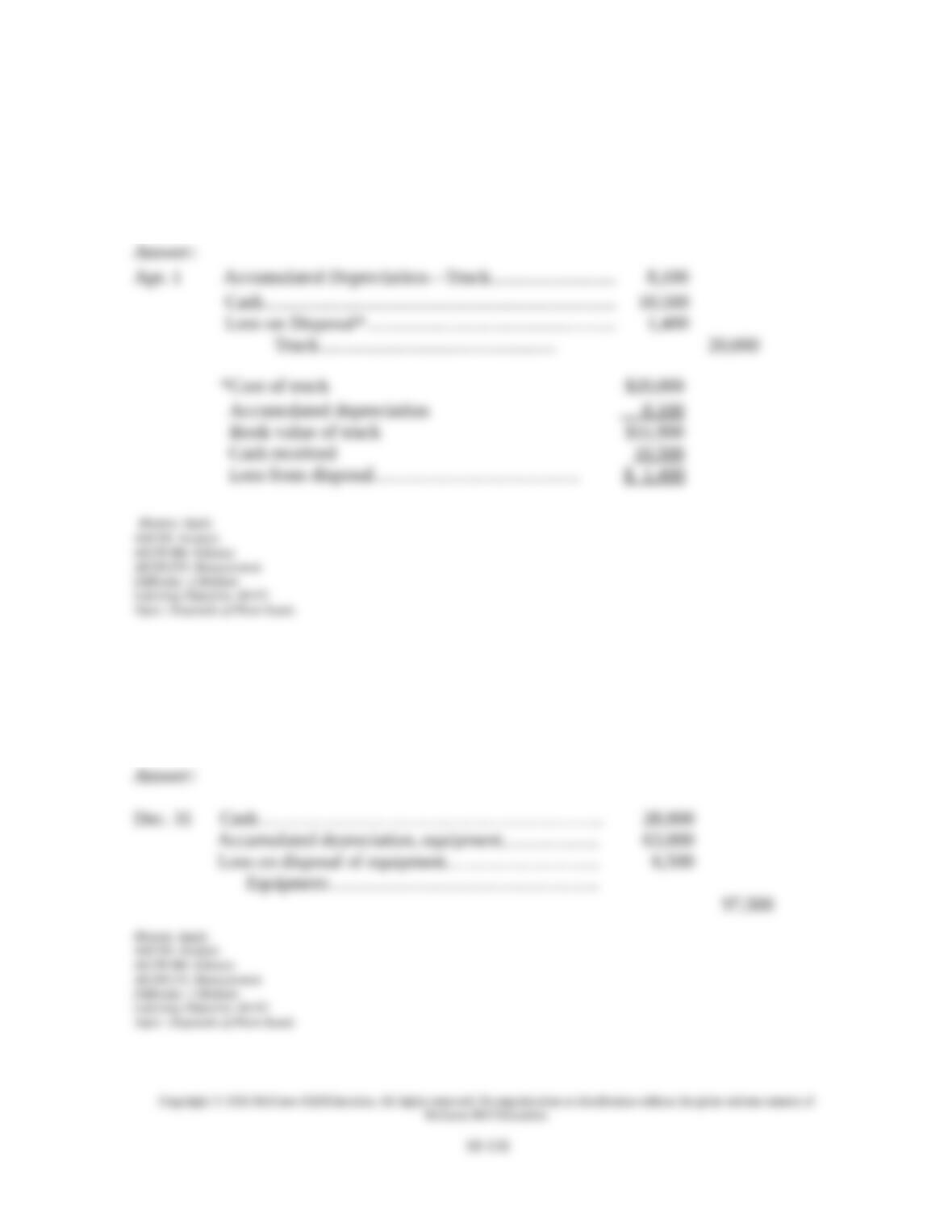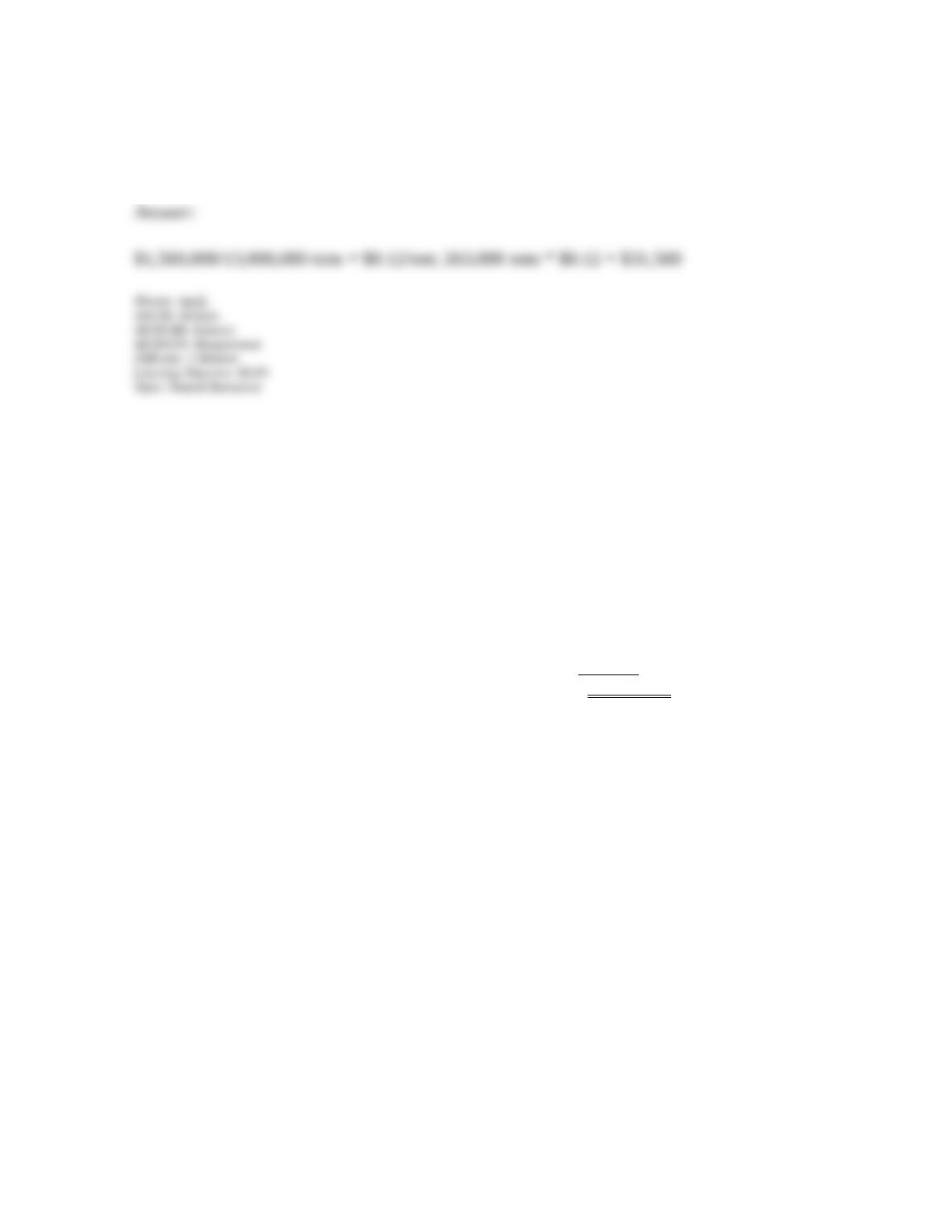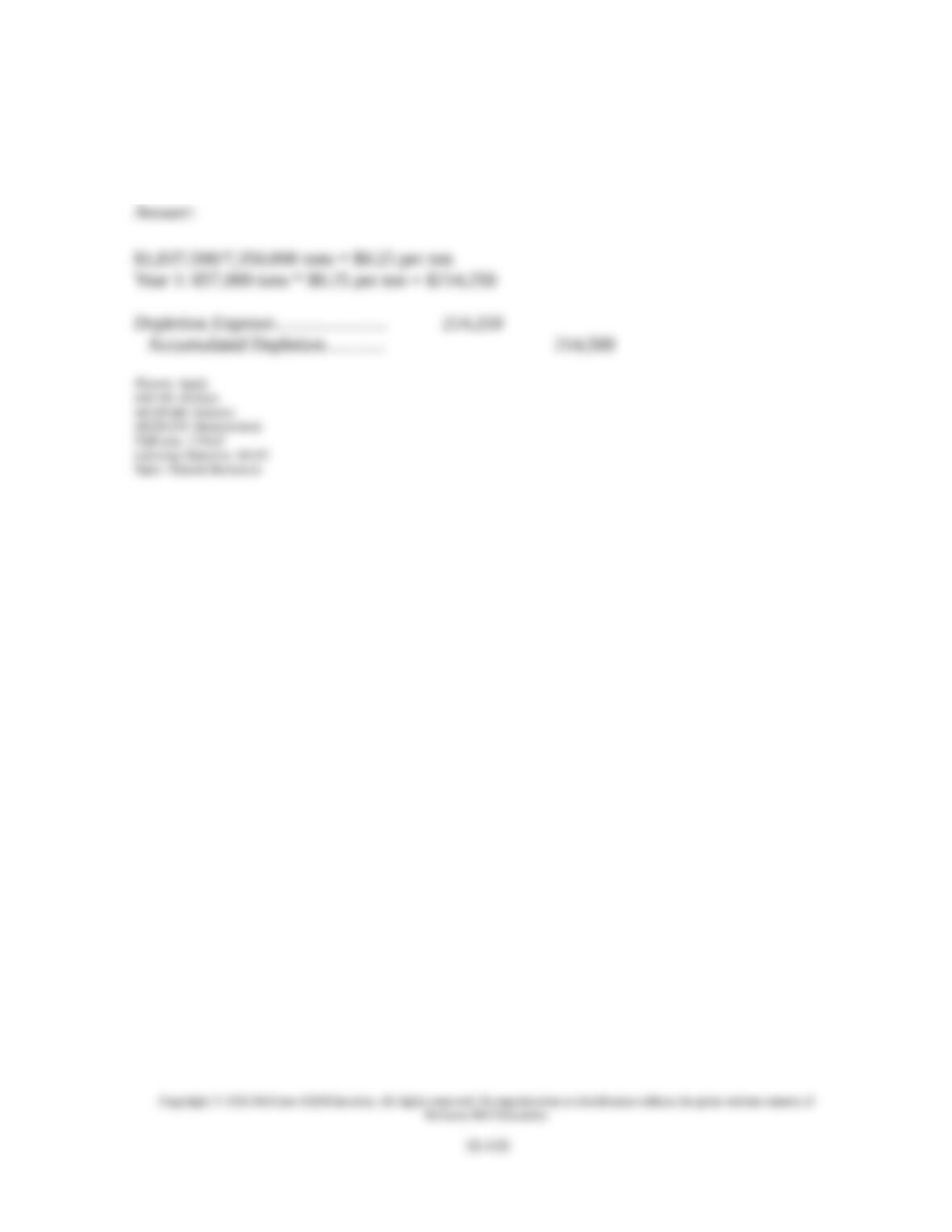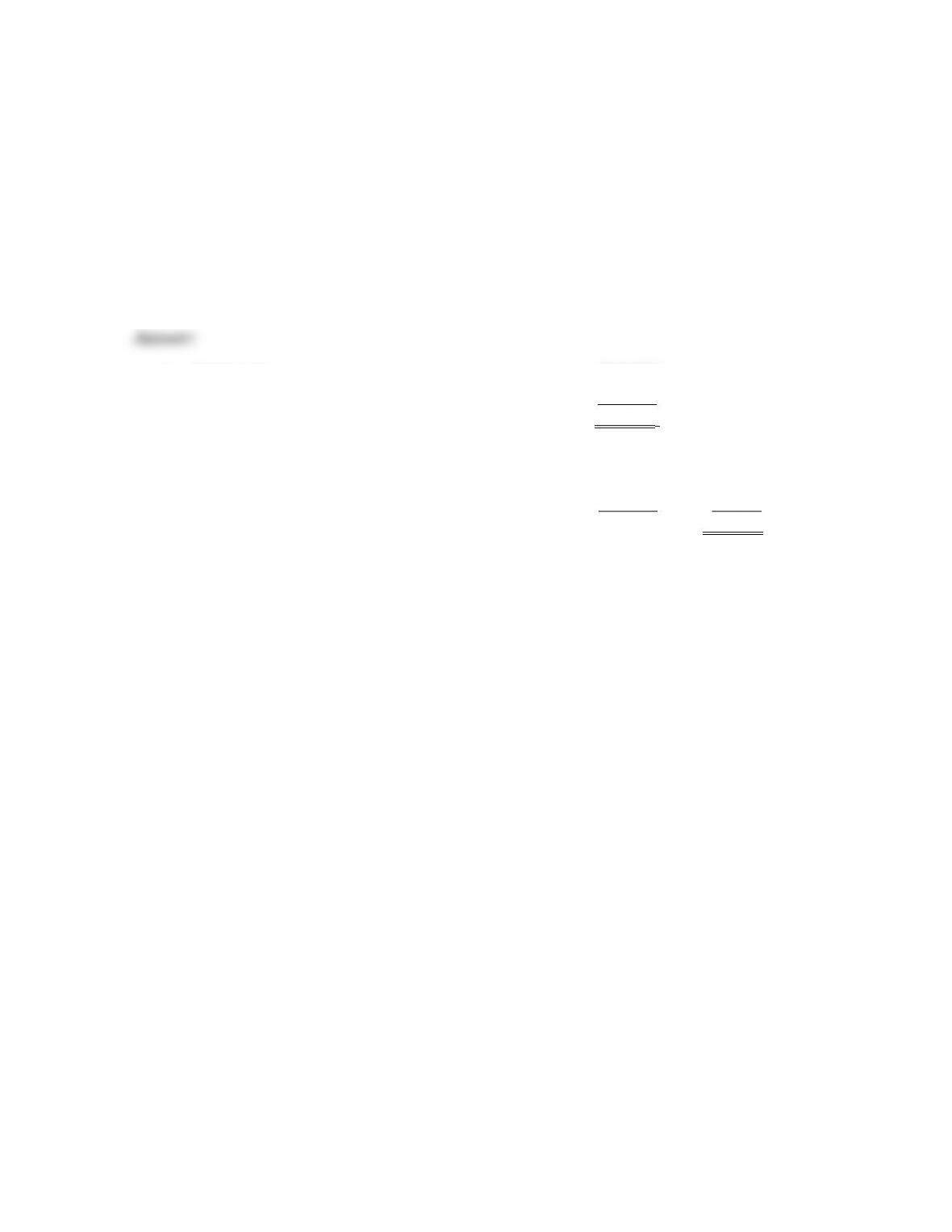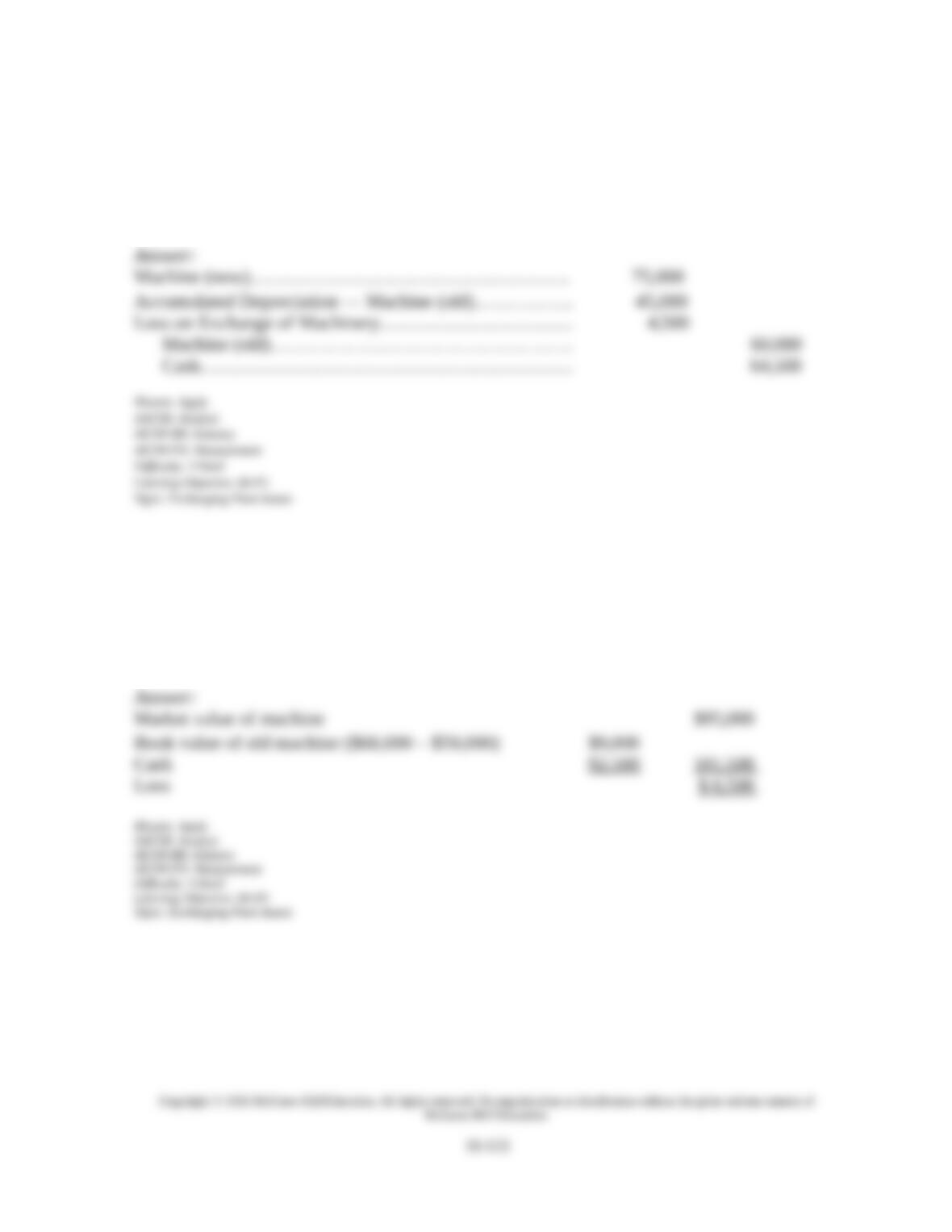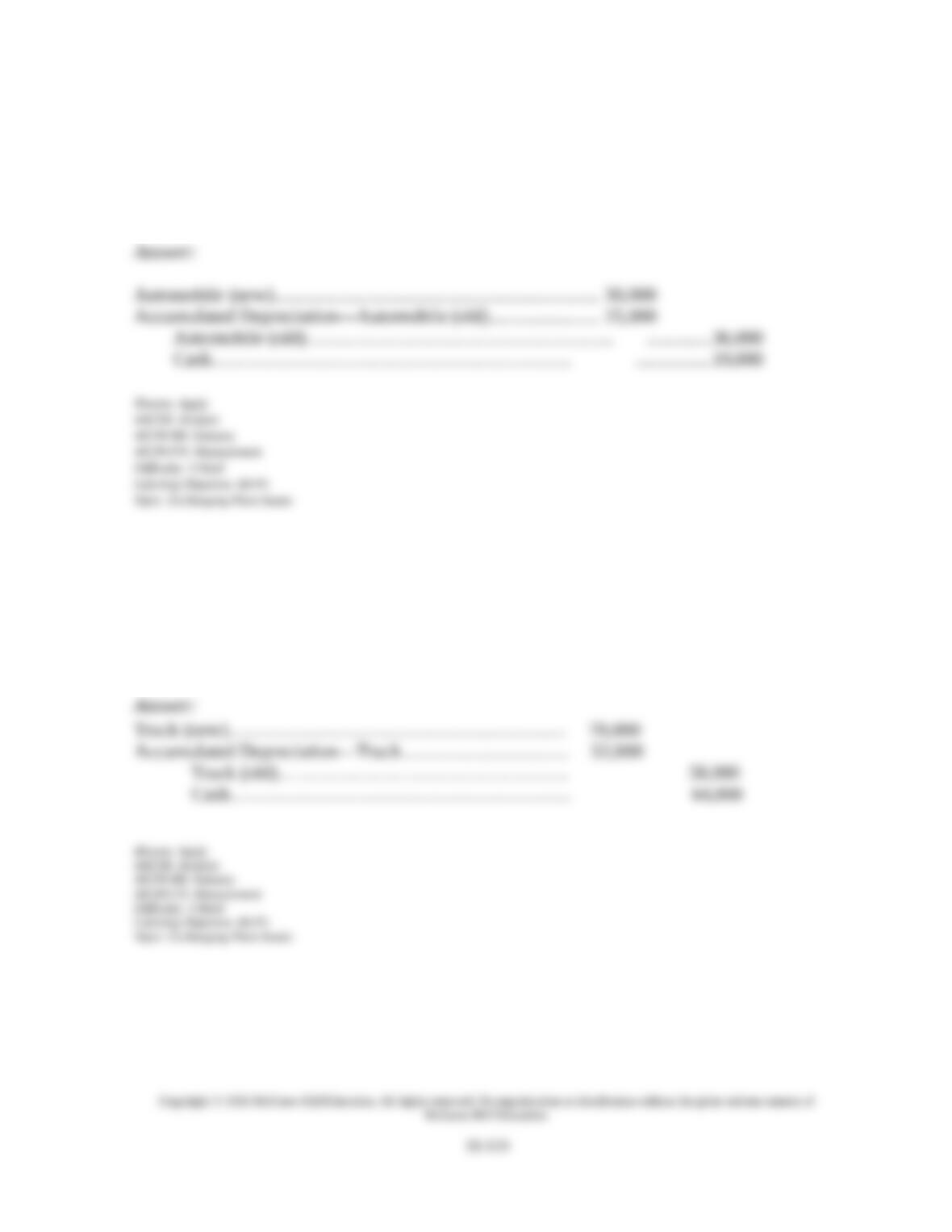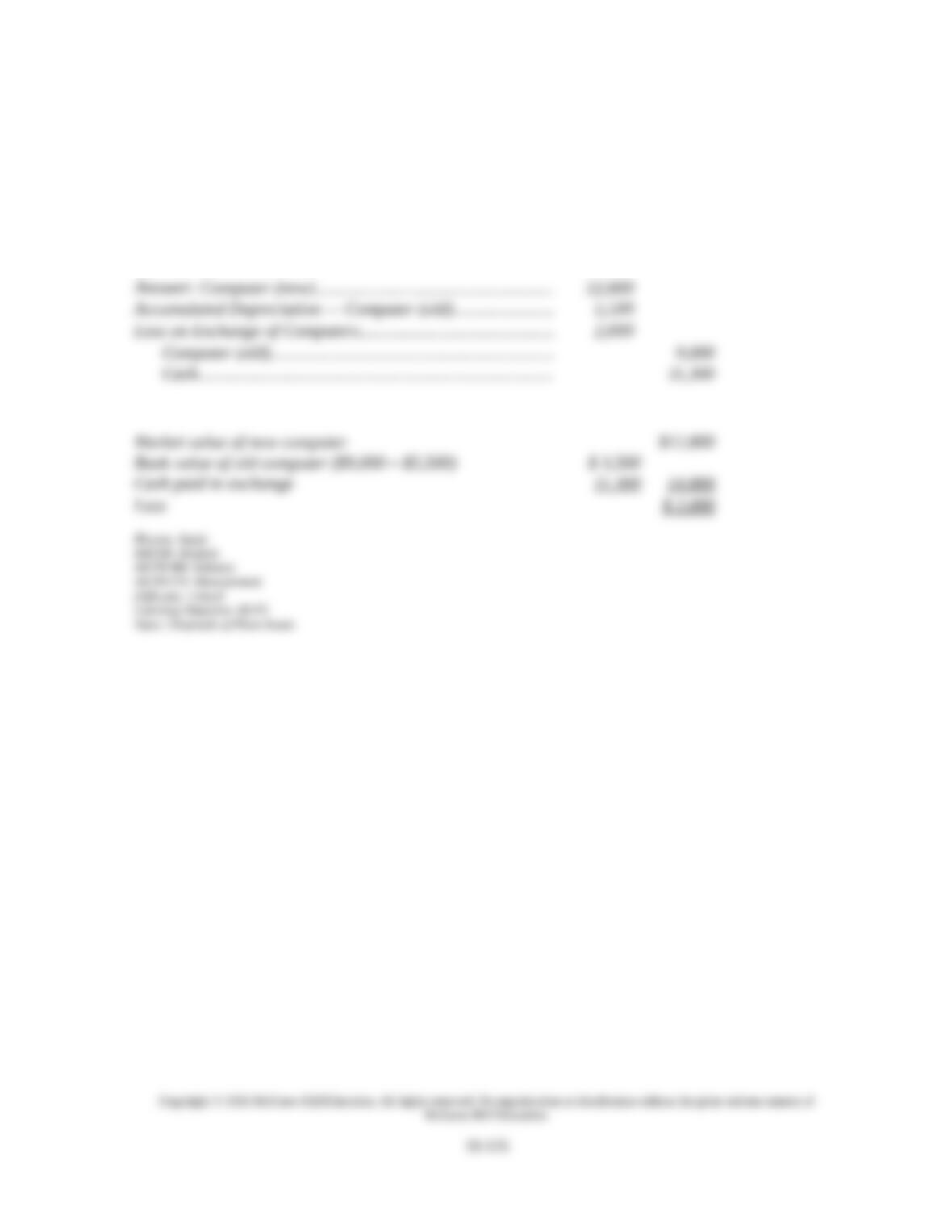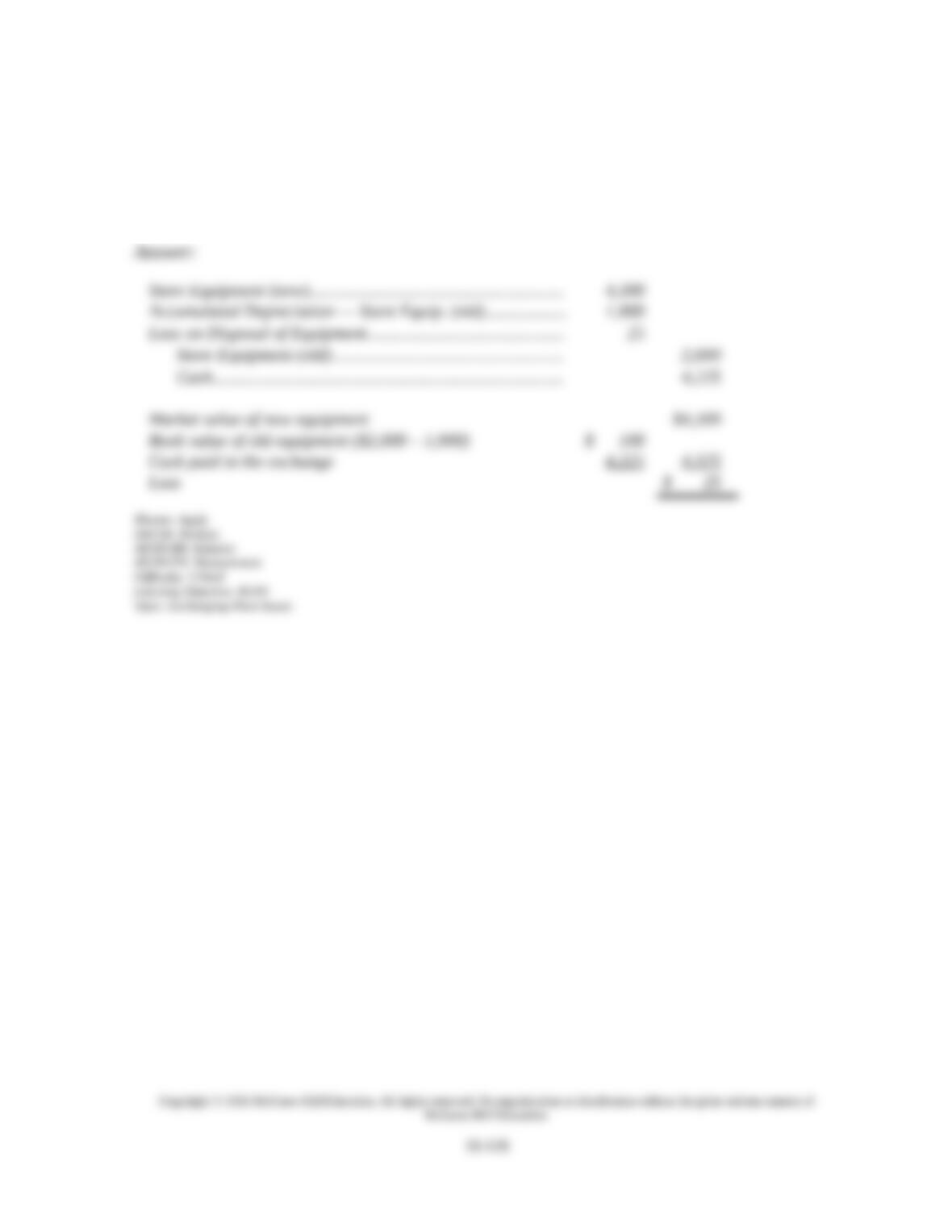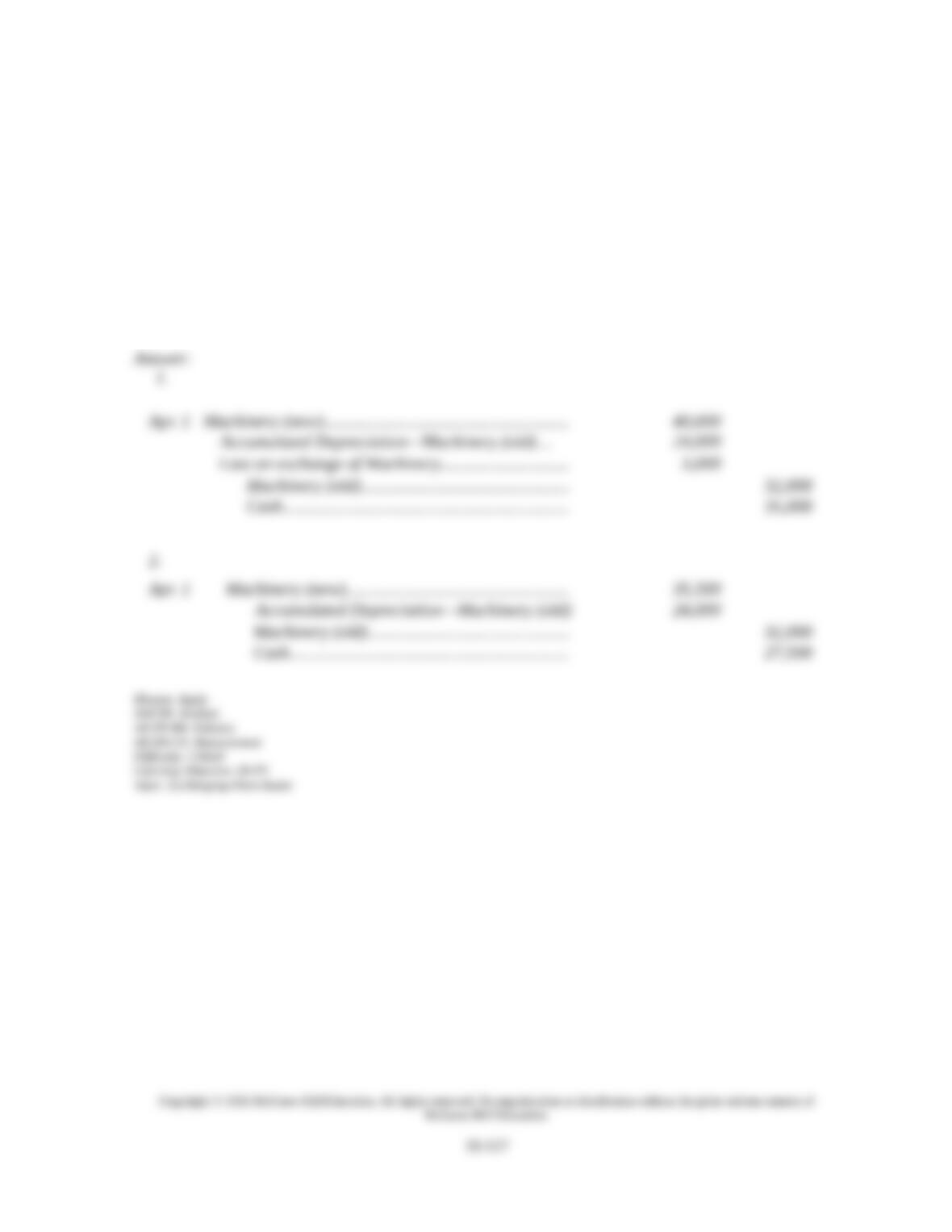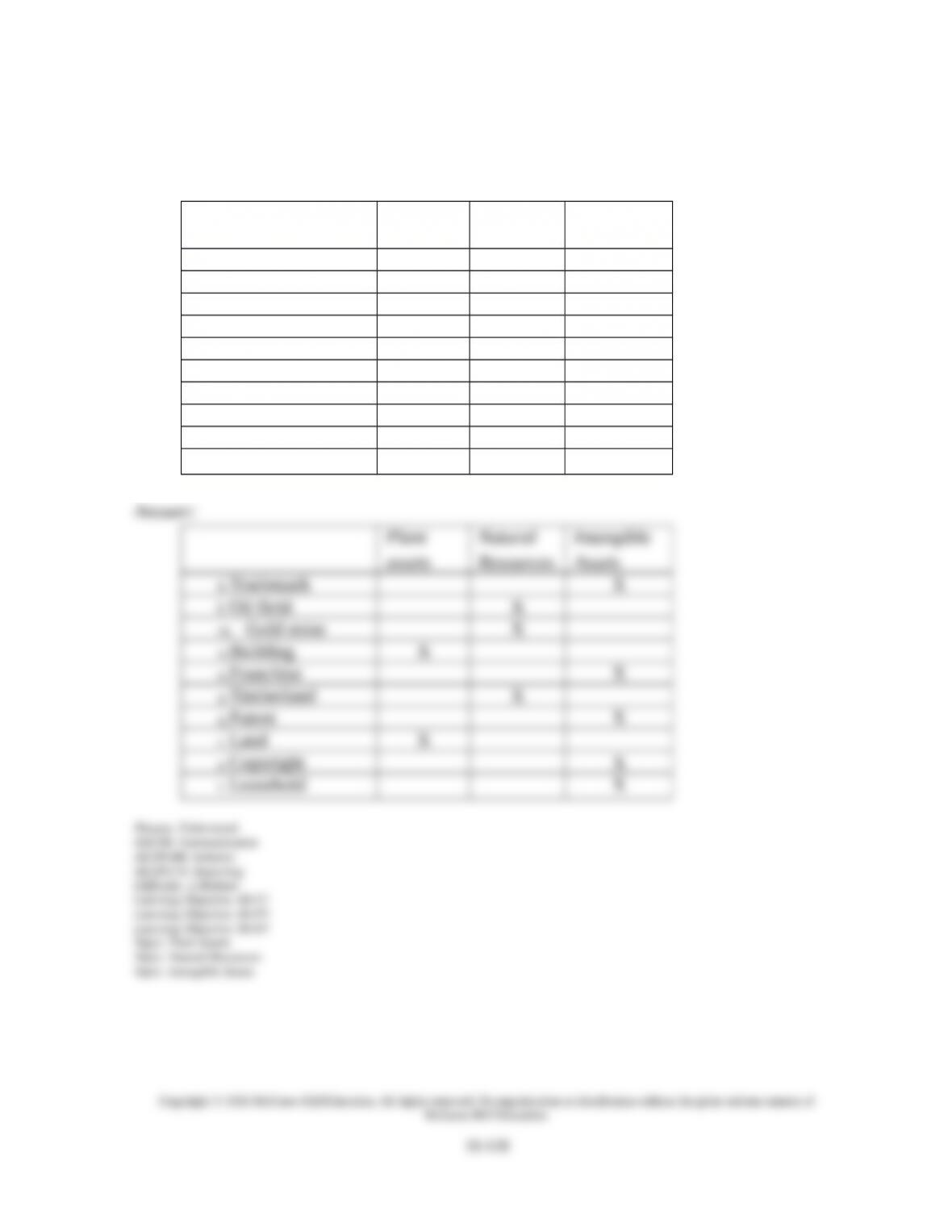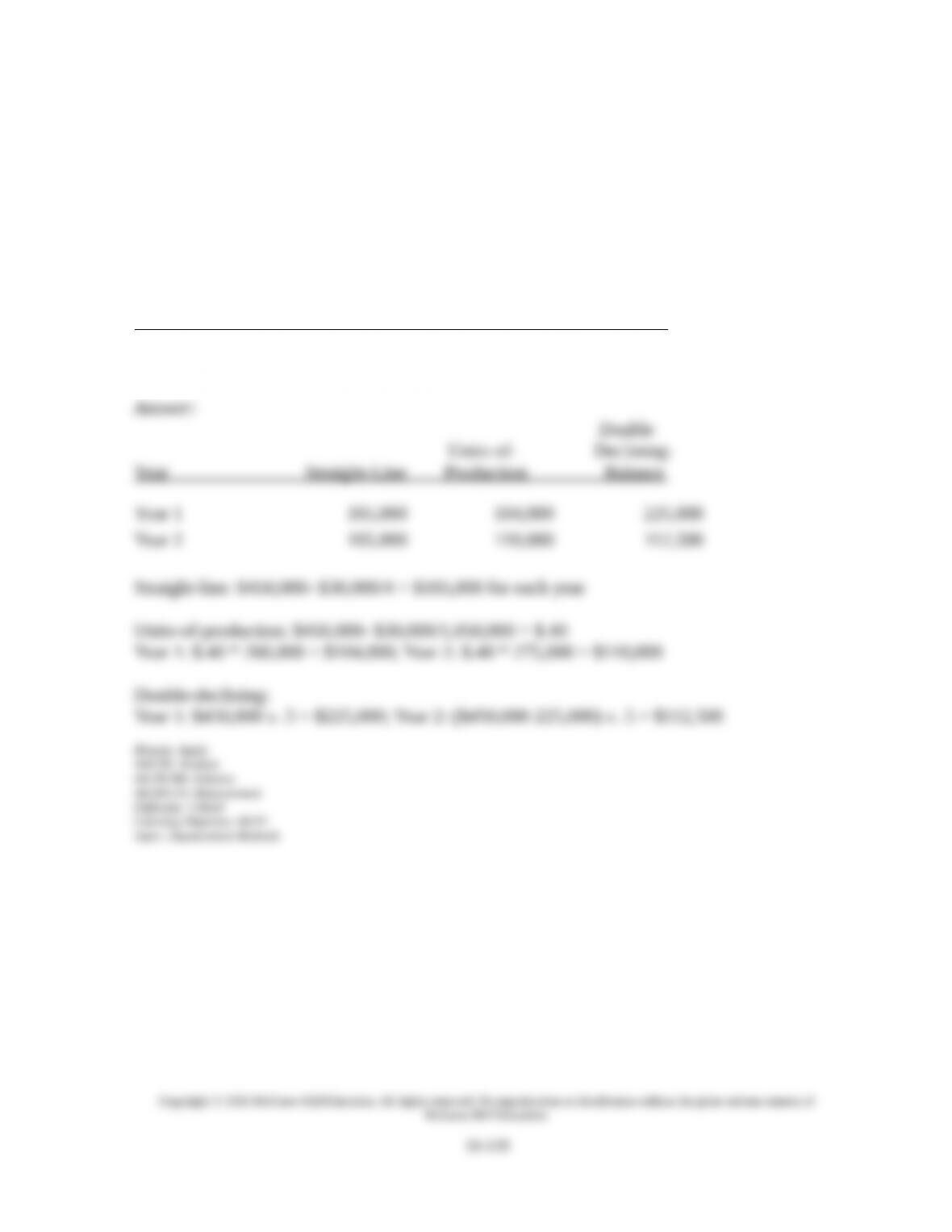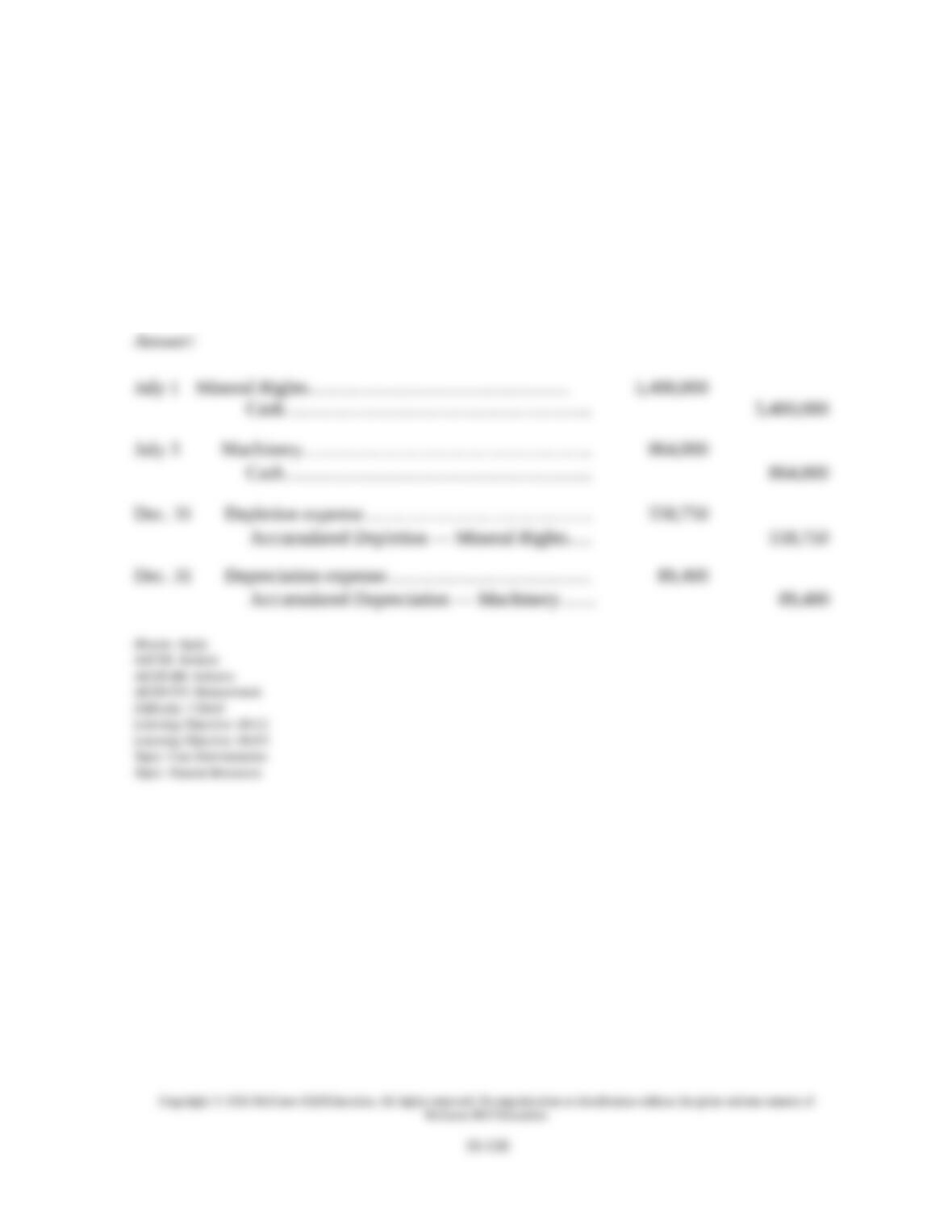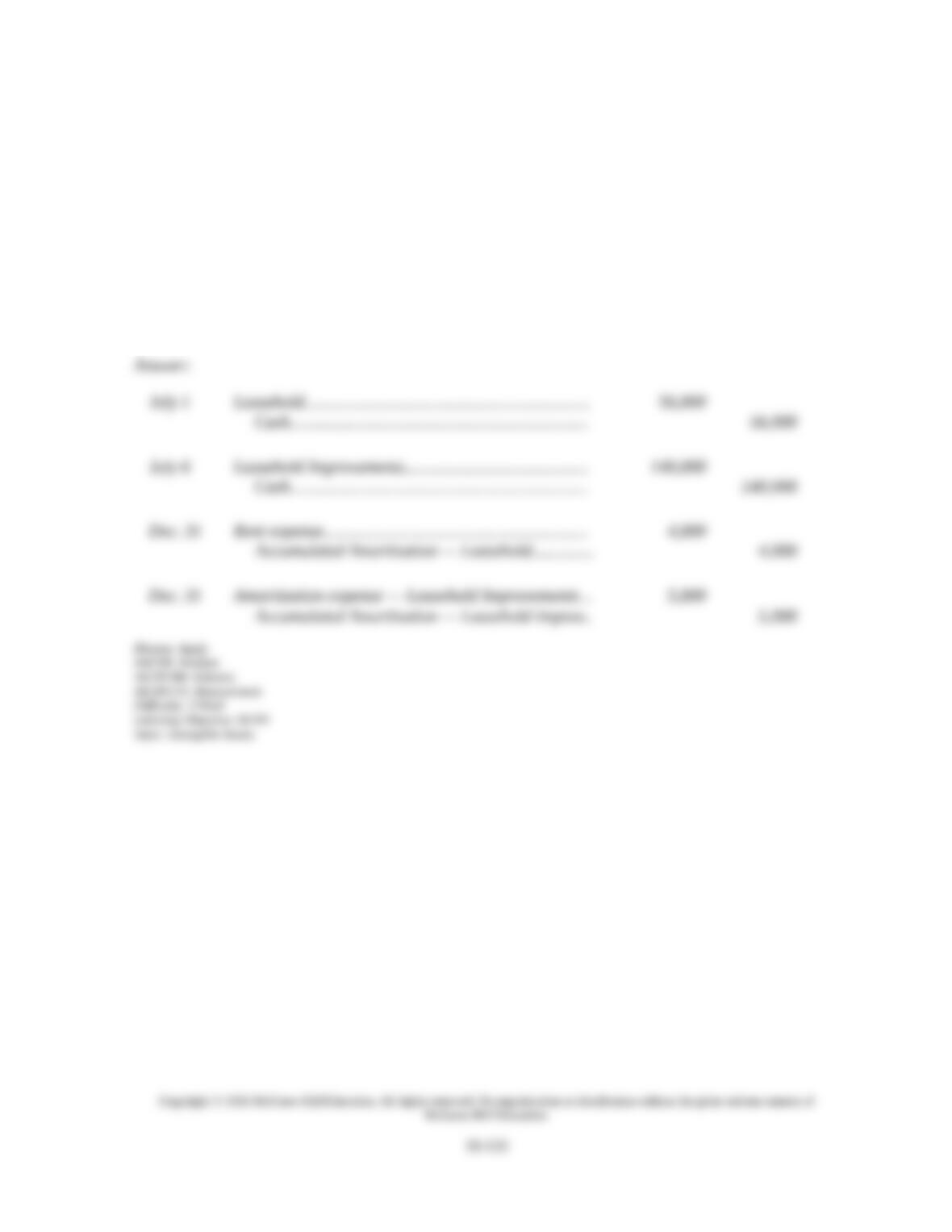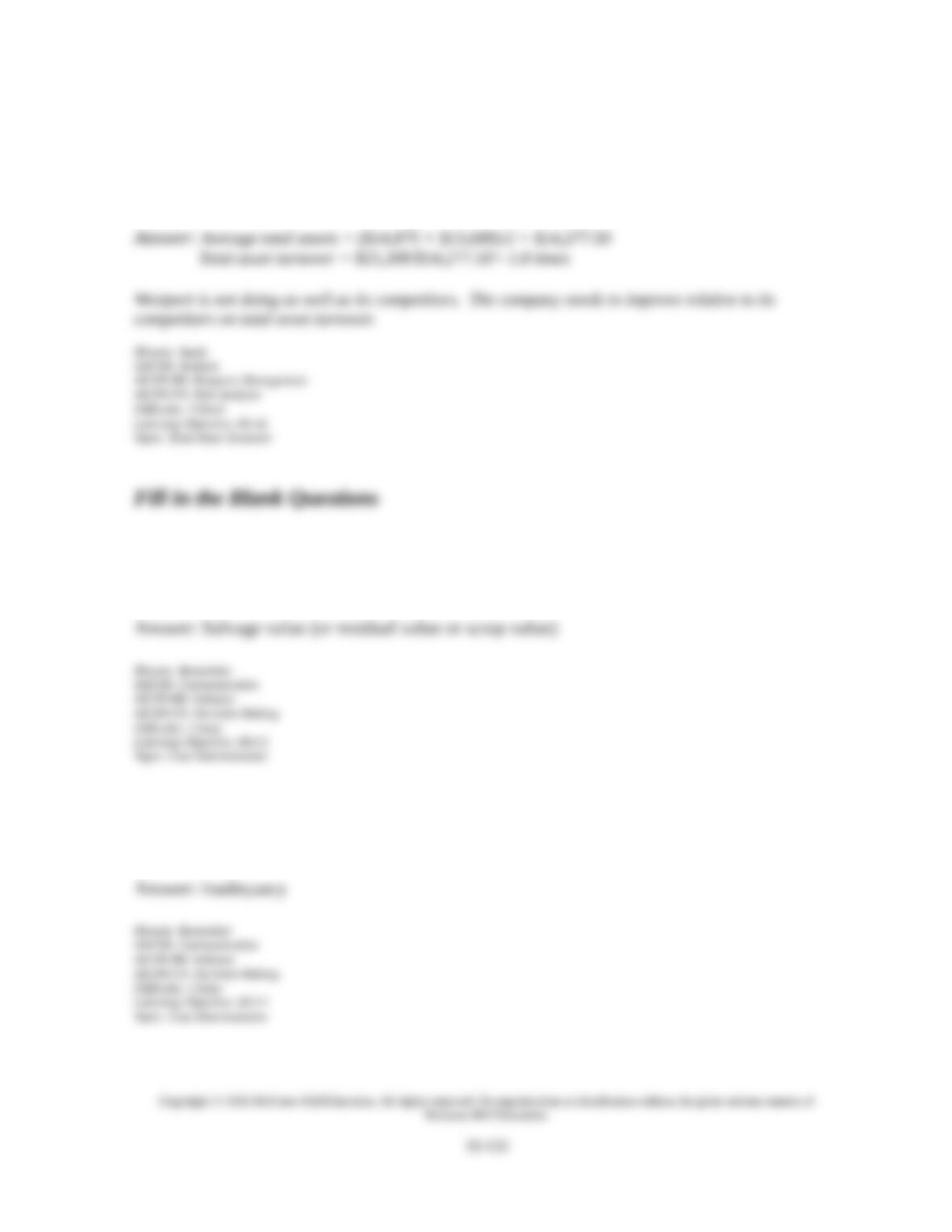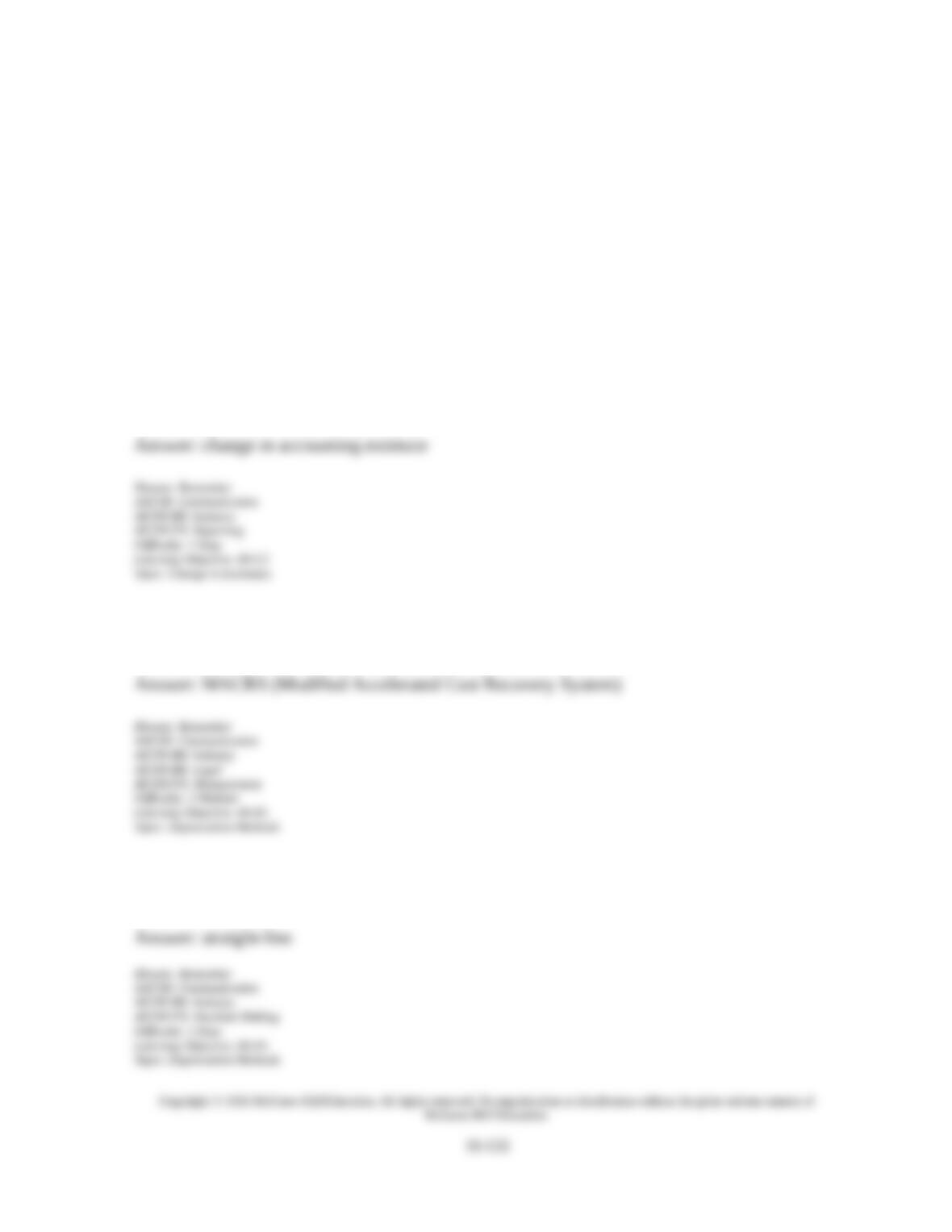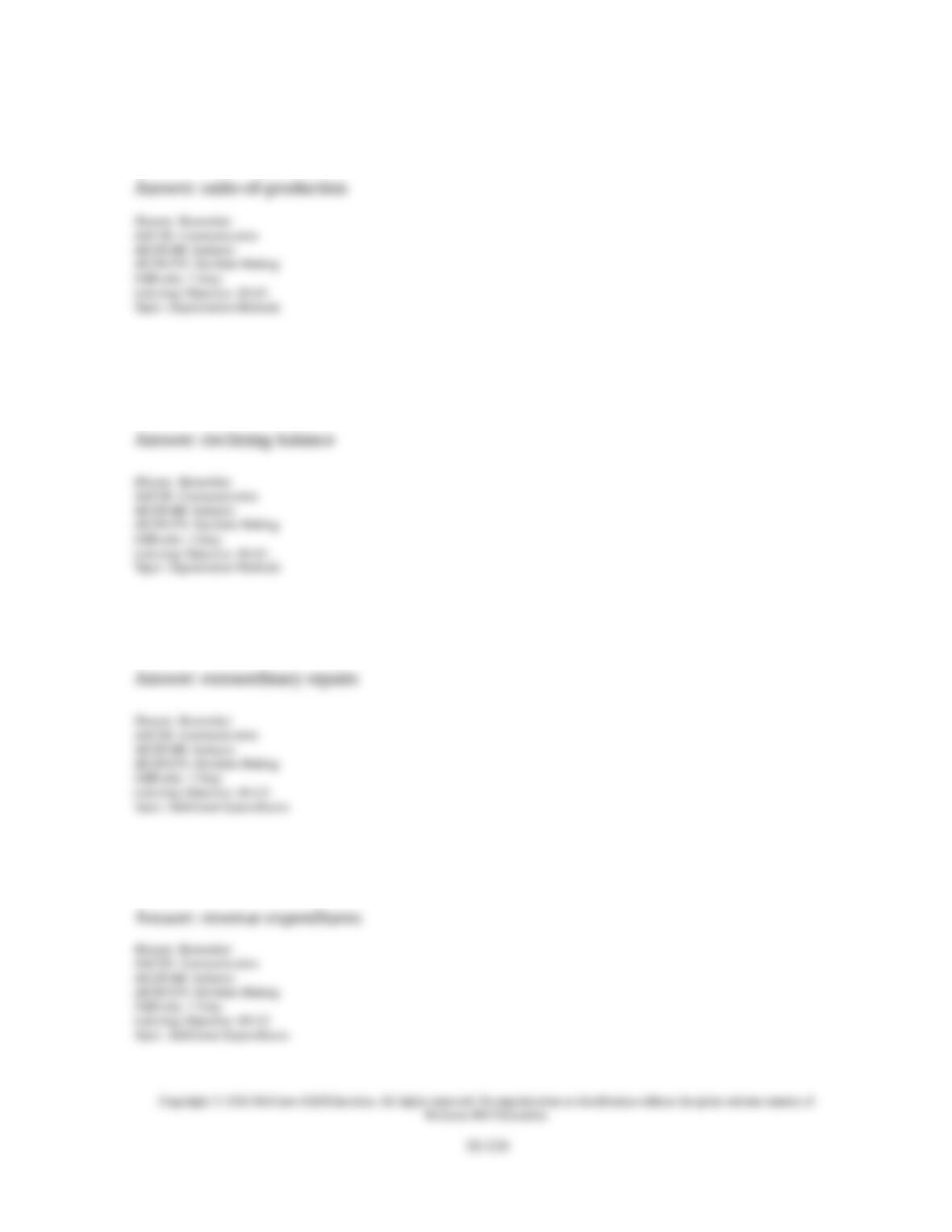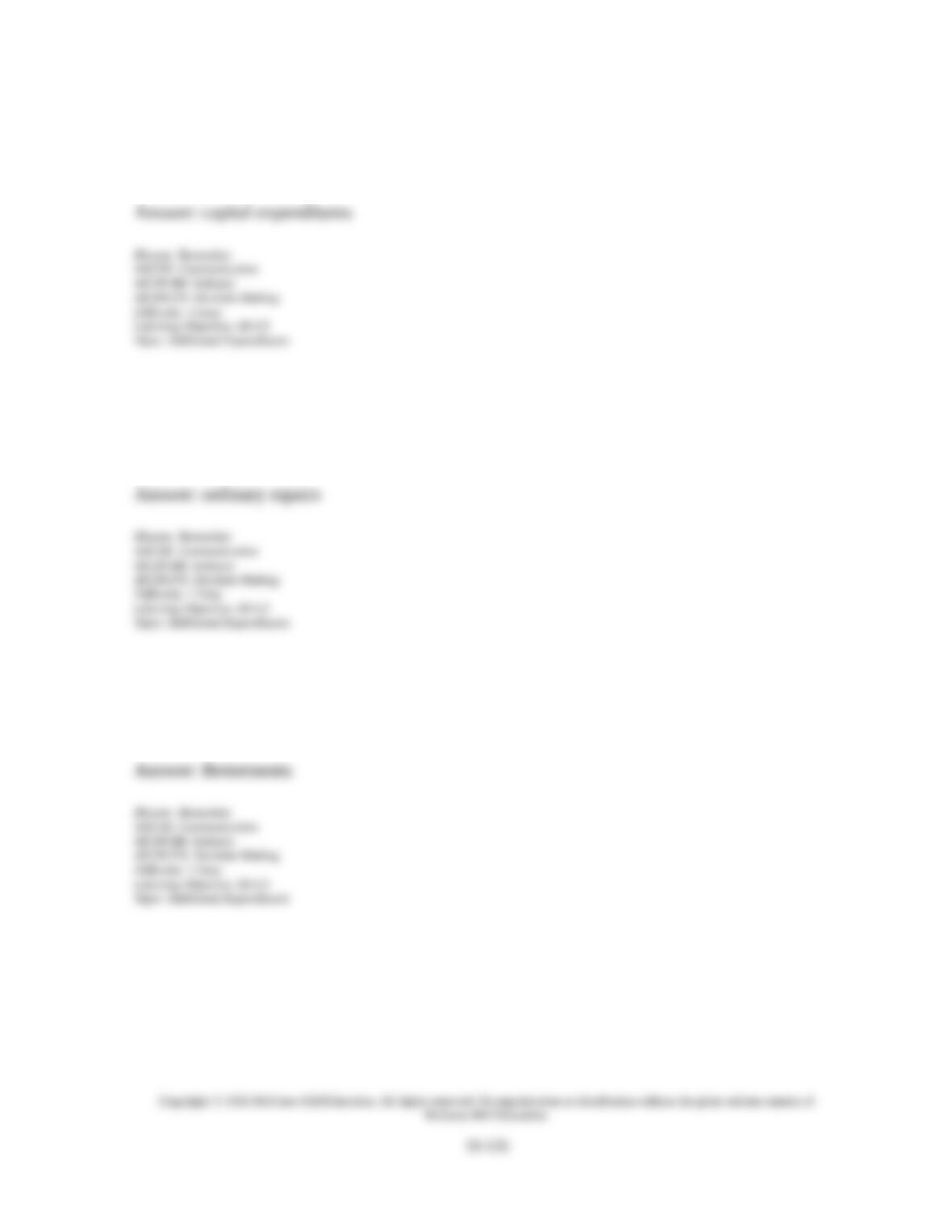190. A company purchased and installed equipment on January 1 at a total cost of $72,000.
Straight-line depreciation was calculated based on the assumption of a five-year life and no
salvage value. The equipment was disposed of on July 1 of the fourth year. The company uses
the calendar year.
1. Prepare the general journal entry to update depreciation to July 1 in the fourth year.
2. Prepare the general journal entry to record the disposal of the equipment under each of
these three independent situations:
a. The equipment was sold for $22,000 cash.
b. The equipment was sold for $15,000 cash.
c. The equipment was totally destroyed in a fire and the insurance company settled the claim
for $18,000 cash.
1. July 1 Depreciation Expense, Equipment.................................. 7,200
Accumulated Depreciation, Equipment...................... 7,200
$72,000/5 x 6/12 = $7,200
2a. July 1 Cash................................................................................ 22,000
Accumulated Depreciation, Equipment*......................... 50,400
Gain on Disposal of Asset.......................................... 400
Equipment.................................................................. 72,000
*($72,000/5) x 3 ½ years = $50,400
2b. July 1 Cash................................................................................ 15,000
Accumulated Depreciation, Equipment........................... 50,400
Loss on Disposal of Asset............................................... 6,600
Equipment.................................................................. 72,000
2c. July 1 Cash................................................................................ 18,000
Accumulated Depreciation, Equipment........................... 50,400
Loss from Fire................................................................. 3,600
Equipment.................................................................. 72,000
Blooms: Apply
AACSB: Analytic
AICPA BB: Industry
AICPA FN: Measurement
Difficulty: 3 Hard
Learning Objective: 08-C2
Learning Objective: 08-P2
Topic: Partial-Year Depreciation
Topic: Disposals of Plant Assets
Copyright © 2016 McGraw-Hill Education. All rights reserved. No reproduction or distribution without the prior written consent of
McGraw-Hill Education.
10-96
























































































